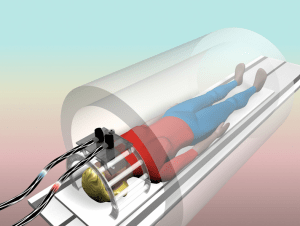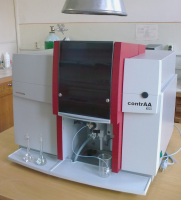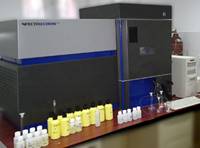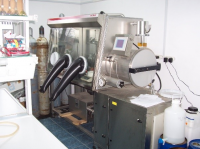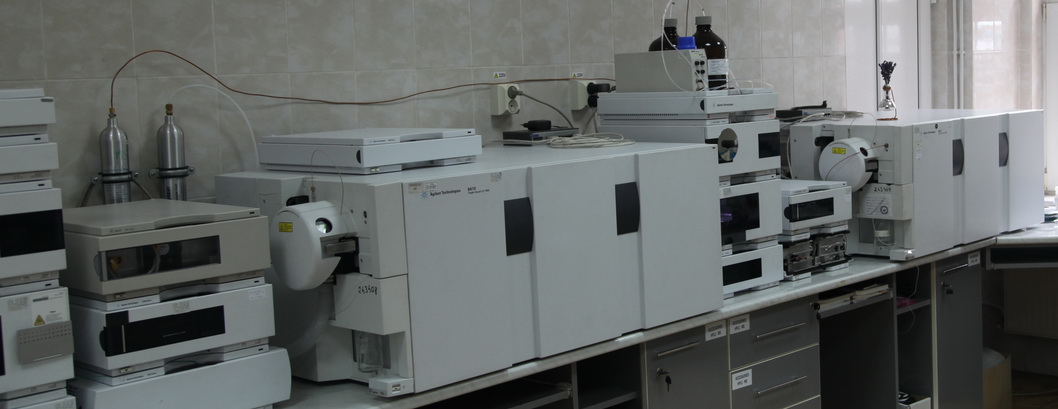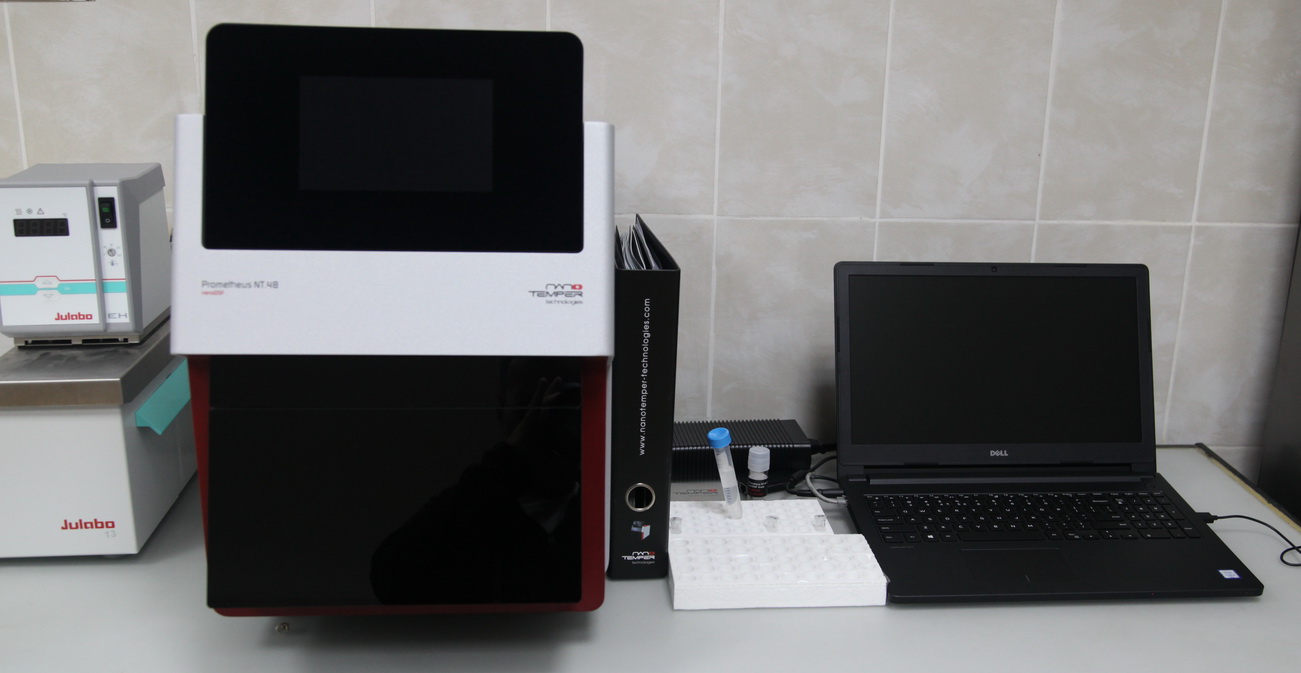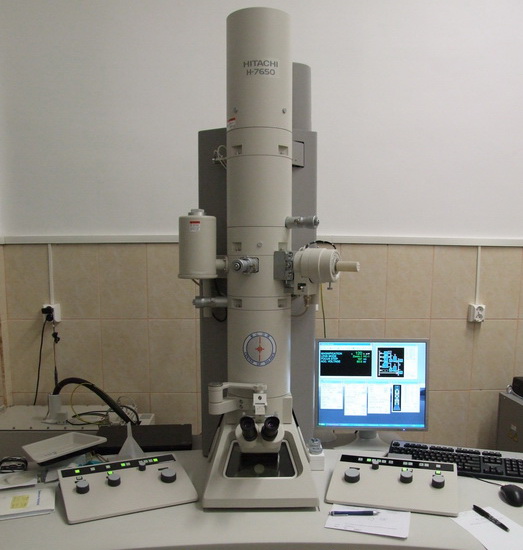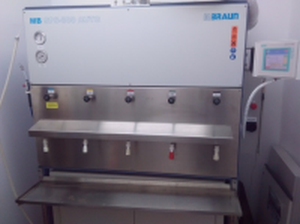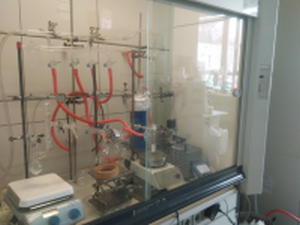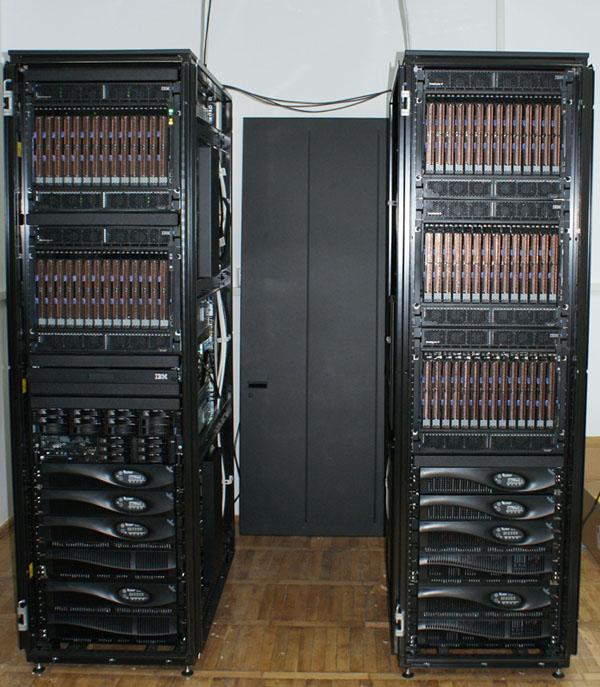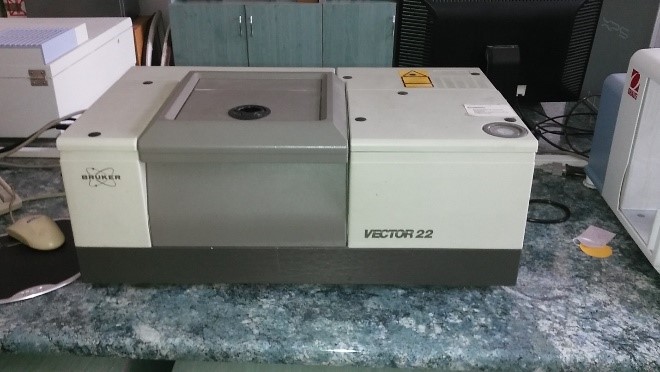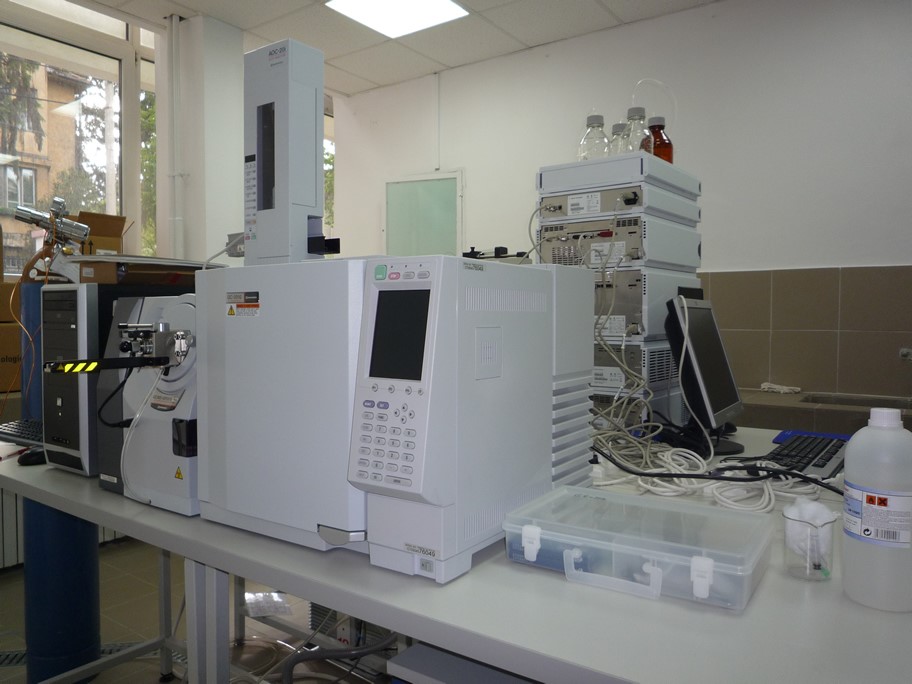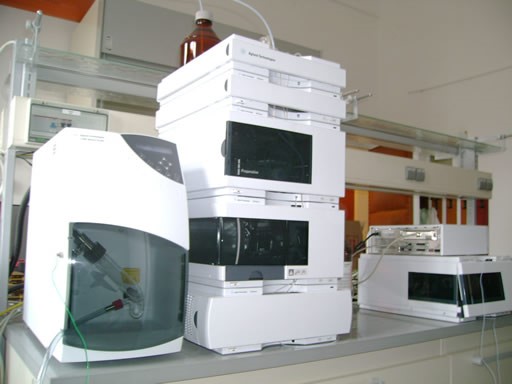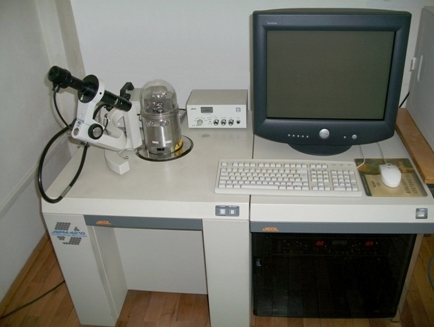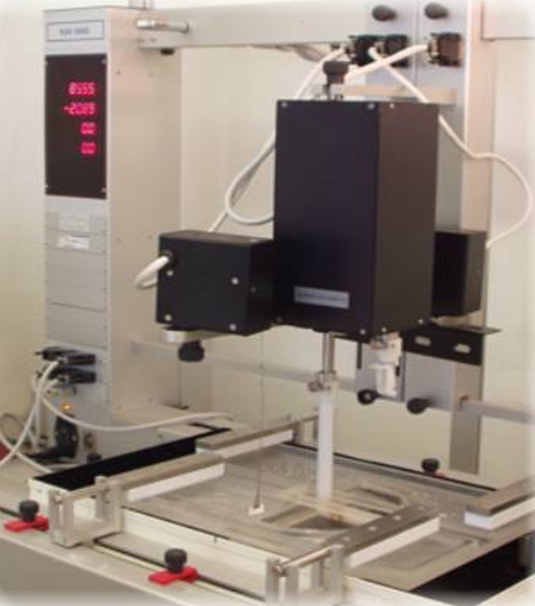The UBB Strategic Research Infrastructure (UBBr) is a platfom that includes internationally competitive resources located/managed in key research units of the university as part of UBB’s Institute of Advanced Studies in Science and Technology – STAR-UBB. UBBr is designed to be open/accessible for use and/or collaborations for researchers from across UBB as well as for external collaborators.
Strategic Research Infrastructure available at UBB – update 2021
| Nr. crt. | Denumire element de infrastructură strategică | Unitatea de cercetare care gestionează elementul de infrastructură | Locația | Responsabilul elementului de infrastructură | Pagina web |
| 1 | Biblioteca Centrului de Filosofie Antică și Medievală | Centrul de Filosofie Antică și Medievală | Facultatea de Istorie și Filosofie | Prof. dr. Baumgarten Alexander | website |
| 2 | Instalație pentru studierea sistemelor de conversie a energiei și captarea CO2 | Centrul de Cercetare în Domeniul Ingineriei Chimice Asistate de Calculator | Facultatea de Chimie și Inginerie Chimică, Laborator 13 | Prof. dr. Cormoş Călin | website |
| 3 | Microscop Electronic de Scanning Jeol JSM 5510LV | Laboratorul de Microscopie Electronică „Prof. Constantin Crăciun” | Facultatea de Biologie și Geologie, demisol | Conf. dr. Lucian Barbu-Tudoran | website |
| 4 | Microscop Electronic de Transmisie Jeol JEM 1010 | ||||
| 5 | Platforma de Psihoterapie prin Robotică/Roboterapie și Realitate Virtuală – PLATFORMA PSYTECH- MATRIX | Institutul Internațional pentru Studii Avansate în Psihoterapie și Sănătate Mintală Aplicată | Facultatea de Psihologie și Științe ale Educației, clădirea AVALON, Cluj-Napoca | Prof. dr. Anca Dobrean | website |
| 6 | Aparat de rezonanță magnetică (RMN) Siemens Magnetom Skyra, 3 Tesla | Institutul de Cercetări în Chimie “Raluca Ripan” | website | ||
| 7 | Spectrometru de absorbţie atomică de înaltă rezoluţie cu sursă continuă de radiație contrAA 300 | Laborator de spectrometrie optică analitică | Prof. dr. Frenţiu Tiberiu | website | |
| 8 | Spectrometru de emisie atomică cu sursă de plasmă cuplată inductiv SPRECTRO CIROSCCD | Facultatea de Chimie şi Inginerie Chimică, lab. 17 | |||
| 9 | Linie integrată TLC Camag | Centrul de cercetare pentru analize chimice avansate, instrumentație Și chemometrie – ANALYTICA | Facultatea de Chimie şi Inginerie Chimică, lab 160 | Prof. dr. Claudia Cimpoiu | website |
| 10 | Spectrometru de masă cu trapă ionică Agilent Technologies cuplat cu HPLC | Centrul de Chimie Supramoleculară Organică și Organometalică – CCSOOM | Prof. dr. Grosu Ion | website | |
| 11 | Spectrometru de masă de înaltă rezoluție LTQ ORBITRAP XL (ThermoScientific) | website | |||
| 12 | Laborator de celule organice solare: • Spectrofotometru UV-VIS – Shimadzu UV1800; • Echipament de depuneri PVD – Mantis Deposition LTD; • Profilometru KLA Tencor D-500; • Monocromator Oriel IQE200B; • Sistem de caracterizări fotovoltaice (fara monocromator). |
website | |||
| 13 | Glovebox Jacomex P(SYS) cu modul de filtrare cu carbune activ și congelator | Facultatea de Chimie şi Inginerie Chimică – Clădirea Radiochimie, Sala (laborator) 270 | Asist. dr. Someșan Adrian | website | |
| 14 | Difractometrul de raze X pe monocristal SMART APEX CCD Single Crystal | Facultatea de Chimie şi Inginerie Chimică, sala 3 | Acad. prof. dr. Cristian Silvestru | website | |
| 15 | Difractometrul de raze X pe monocristal D8 Venture | Facultatea de Chimie şi Inginerie Chimică, sala 2 | website | ||
| 16 | Glovebox MBraun MB-Unilab Plus SP | Facultatea de Chimie şi Inginerie Chimică, str. Fântânele, nr. 30, laborator 8A |
website | ||
| 17 | Unitate complexă de analize LC-MS | Centrul de Cercetare Biocataliză și Biotransformări | Facultatea de Chimie şi Inginerie Chimică, sala 32-35 | Dr. Robert Totos | website |
| 18 | Prometheus-NT 48 | Lect. dr. Laszlo Csaba Bencze | |||
| 19 | Unitate de analize cromatografice chirale | Prof. dr. ing. Csaba Paizs / Prof. dr. ing. Monica Ioana Toșa | |||
| 20 | Microscop de transmisie electronic Hitachi H-7650 | Institutul de Cercetări în Chimie “Raluca Ripan” | Conf. dr. Katona Gabriel | ||
| 21 | Cititor de microplăci TECAN 10M Spark | Facultatea de Chimie şi Inginerie Chimică | Lect. dr. Laszlo Csaba Bencze | ||
| 22 | Cromatograf de proteine – FPLC -Aekta | Prof. dr. ing. Csaba Paizs / Lect. dr. Laszlo Csaba Bencze | |||
| 23 | Liofilizator- ALPHA 1-2, LD Plus | Prof. dr. ing. Monica Ioana Toșa | |||
| 24 | Sistem de electrospinning FLUIDNATEK® 2017-F012 | Prof. dr. ing. Monica Ioana Toșa / Conf. dr. Katona Gabriel | |||
| 25 | Sistem de reacție în flux și microflux – SPINSPLIT | Prof. dr. ing. Csaba Paizs / Conf. dr. Katona Gabriel / Dr. Robert Totos | |||
| 26 | Reactor chimic cu microunde și ultrasunete – Model UMCR-SM50 | Conf. dr. Katona Gabriel | |||
| 27 | Laborator de Spectroscopie de Rezonanță Electronică de Spin (LaRES) | Centrul de Cercetare în Heterochimie Fundamentală și Aplicată și Centrul de Cercetare al Radicalilor Liberi | Facultatea de Chimie şi Inginerie Chimică, sala nr.1 și nr. 3 | Prof. dr. Silaghi- Dumitrescu Radu / Conf. dr. Miclăuş Vasile / Prof. dr. Damian Grigore | website |
| 28 | Incintă de lucru în atmosferă inertă de tip “Glove Box” |
Centrul de Cercetare în Heterochimie Fundamentală și Aplicată (Metalomica) |
Facultatea de Chimie şi Inginerie Chimică, laboratorul 202-203 | Prof. dr. Nemeș Gabriela/Lect. dr. Raluca Anamaria Șeptelean | website |
| 29 | Sistem automat de purificare a solvenților | ||||
| 30 | Stații de lucru în atmosferă controlată (4 unităţi) | ||||
| 31 | Nod de calcul de tip IBM BladeCenter H | Facultatea de Chimie şi Inginerie Chimică, laboratorul 104 | Prof. dr. Silaghi- Dumitrescu Radu /Prof. dr. Nemeș Gabriela | website | |
| 32 | Sistem stopped-flow UV-VIS cuplat cu freeze-quench | Facultatea de Chimie şi Inginerie Chimică, sala 54 | Prof. dr. Silaghi- Dumitrescu Radu | website | |
| 33 | Sistem de calcul de înaltă performanță și cloud privat IBM IntelIigentCluster | Institutul de Cercetări pentru Sustenabilitate şi Managementul Dezastrelor bazat pe Calcul de Înaltă Performanță – ISUMADECIP | Facultatea de Ştiinţe Economice şi Gestiunea Afacerilor | Prof. dr. Silaghi Gheorghe / Conf. dr. Niculescu Virginia | website |
| 34 | Sistem teledetecție laser – mobil: LR231- D300 model multi- wave length Raman Depolarization LIDAR | Institutul de Cercetări în Chimie “Raluca Ripan” | Lect. dr. ing. Nicolae Ajtai | website | |
| 35 | Sistem integrat de spectrometrie RMN | Laboratorul de Spectrometrie RMN | Facultatea de Chimie şi Inginerie Chimică, lab. 4 | Dr. Porumb Dan | website |
| 36 | Laborator de analiză elementală Flash EA- 1112 | Laboratorul de spectrometrie de masă cuplată cu gaz cromatograf | Facultatea de Chimie şi Inginerie Chimică, sala 2 | Prof. dr. Silaghi Dumitrescu Luminița | website |
| 37 | Spectroscopie în domeniul infraroșu FT- IR Vector 22 | Facultatea de Chimie şi Inginerie Chimică, sala 139 | |||
| 38 | Gazcromatograf cuplat cu spectrometru de masă Shimadzu QP2010 | Facultatea de Chimie şi Inginerie Chimică, sala 205 | |||
| 39 | Cromatografie lichidă de înaltă performanță preparativă Agilent 1200 | Facultatea de Chimie şi Inginerie Chimică, sala 144 | |||
| 40 | Laborator de sinteză asistată de microunde Synthos 3000 | Facultatea de Chimie şi Inginerie Chimică, sala 139 | |||
| 41 | Microscop de baleaj cu sondă JEOL JSPM 4210 – Microscopie de fortă atomică (AFM) și de tunelare (STM) | Centrul de cercetare în chimie-fizică – CECHIF | Institutul de Cercetări în Chimie “Raluca Ripan”Laborator As2 | Prof. dr. Tomoaia Cotișel Maria/ Conf. dr. Mocanu Aurora | website |
| 42 | Echipament KSV 5000, Tehnica Langmuir- Blodgett de structuri supramoleculare la interfete fluide si fluid/solid | Facultatea de Chimie şi Inginerie Chimică, Laborator 73 | website | ||
| 43 | Combină electrochimică AUTOLAB PGSTAT302N | Centrul de Cercetări în Electrochimie și Materiale Neconvenționale (CCEMN) | Facultatea de Chimie şi Inginerie Chimică, Centrul de Cercetări în Electrochimie și Materiale Neconvenționale (CCEMN), Lab. 78 | Prof. dr. Liana Mureșan | website |
| 44 | Combină electrochimică AUTOLAB PGStat 10, Echochemie | Facultatea de Chimie şi Inginerie Chimică, Centrul de Cercetări în Electrochimie și Materiale Neconvenționale (CCEMN), Lab. 78 | |||
| 45 | Combină electrochimică PAR 2273, Princeton Applied Research-USA | Facultatea de Chimie şi Inginerie Chimică, Centrul de Cercetări în Electrochimie și Materiale Neconvenționale (CCEMN), Lab. 76 | |||
| 46 | Combină electrochimică SP-150 BioLogic | Facultatea de Chimie şi Inginerie Chimică, Centrul de Cercetări în Electrochimie și Materiale Neconvenționale (CCEMN), Lab 76 | |||
| 47 | Combină electrochimică VoltaLab PGP201, Radiometer Analytical | Facultatea de Chimie şi Inginerie Chimică, Centrul de Cercetări în Electrochimie și Materiale Neconvenționale (CCEMN), Lab 76, 217 | |||
| 48 | Microscopul electronic de baleaj cu fascicol dual: FEB și FIB FEI QUANTA 3D FEG | Institutul de Cercetări Interdisciplinare în Bio-Nano-Știinţe | ICI-BNS/Centrul de materiale nanostructurate și biointerfețe, sala S6 | Prof. dr. Simon Simion | website |
| 49 | Microscop electronic de transmisie de înaltă rezoluție tip FEI Tecnai F20 | ICI-BNS/Centrul de materiale nanostructurate și biointerfețe, sala S7 | website | ||
| 50 | Analizor de suprafață specifică BET QSURF 9600 | ICI-BNS, sala 210 | website | ||
| 51 | Sistem multifuncțional de analiză a suprafețelor tip SPECS | ICI-BNS, sala S4 | website | ||
| 52 | Spectrometru FTIR cuplat cu microscop | ICI-BNS, sala 210 | website | ||
| 53 | Microscop optic inversat de fluorescență (Axio Observer 21, Zeiss) | ICI-BNS, Centrul de Nanobiofotonică și Microspectroscopie Laser, sala S5A | Prof. dr. Aștilean Simion | website | |
| 54 | Echipament pentru producerea de grafene și nanotuburi de carbon Black Magic BM ll Flexlbte 2″ (Aixtron) | ICI-BNS, Centrul de Nanobiofotonică și Microspectroscopie Laser, sala S5B | website | ||
| 55 | Sistem pentru determinarea distribuției dimensionale și a potențialulul electric (Nano ZS9O, Malvern) cu autotitrator (MPT-2) | ICI-BNS, Centrul de Nanobiofotonică și Microspectroscopie Laser, sala 301 | website | ||
| 56 | Cuptor monomodal pentru sinteza de nanoparticule și tratament în câmp de microunde (Monowave 300, Anton Paar) | ICI-BNS, Centrul de Nanobiofotonică și Microspectroscopie Laser, sala 301 | website | ||
| 57 | Sistem de microscopie confocală de fluorescență rezolvată temporal (MicroTime200, PicoQuant) | ICI-BNS, Centrul de Nanobiofotonică și Microspectroscopie Laser, sala S5A | website | ||
| 58 | Microscop Raman Confocal cuplat cu Microscop de Forță Atomică (Alpha300 Witec) | ICI-BNS, Centrul de Nanobiofotonică și Microspectroscopie Laser, sala S8 | website | ||
| 59 | Echipament pentru depunere de filme metalice subțiri prin metode fizice (Prevac) | ICI-BNS, Centrul de Nanobiofotonică și Microspectroscopie Laser, sala S5B | website | ||
| 60 | Spectrofluorimetrul JASCO FP-8600 echipat cu sfera integratoare ILF-835 | ICI-BNS, Centrul de Nanobiofotonică și Microspectroscopie Laser, sala 301 | website | ||
| 61 | Sistem de microscopie confocală de fluorescență cu dublă scanare (Re-Scanning Confocal Microscopy – RCM) | ICI-BNS, Centrul de Nanobiofotonică și Microspectroscopie Laser, sala S5A | website | ||
| 62 | Spectrometru cu absorbtie atomică GBC- AVANTA pM + cuptor de grafit | ICI-BNS, Centrul de Analize Fizico- Chimice, sala S1; | Prof. dr. Ilea Petru | website | |
| 63 | Herbarul Universității Babeş-Bolyai (CL) | Grădina Botanică “Al. Borza” | Grădina Botanică Al. Borza, Institutul Botanic | Conf. dr. Puscaș Mihai | website |
| 64 | Instalații de măsurători magnetice: VSM 12 T de la Cryogenics, MagLab 2000 9T de la Oxford, Balanță orizontală de tip Weiss | Institutul de Fizică “Ioan Ursu” | Institutul de Fizică „Ioan Ursu”, Laborator de măsurători magnetice | Prof. dr. Tetean Romulus | website |
| 65 | Instalaţie pentru depunere de filme subţiri prin metoda pulverizarii (sputtering ) folosind tehnologiile DC si RF | Institutul de Fizică „Ioan Ursu”, Laborator de filme subţiri | Lect. dr. Lung Claudiu | website | |
| 66 | Instalaţie pentru măsurători de transport în câmpuri magnetice intense | Institutul de Fizică „Ioan Ursu”, Laborator de transport în câmpuri magnetice intense | Conf. dr. Deac Iosif | website | |
| 67 | Difractometru de raze X : Bruker D8-X Advance | Institutul de Fizică „Ioan Ursu”, Laborator de măsurători magnetice | Conf. dr. Andreica Daniel | website | |
| 68 | Instalații de măsurători termice: TA- Instruments Q600 Simultaneous DSC-TGA | Institutul de Fizică „Ioan Ursu”, Laborator de măsurători magnetice | Prof. dr. Pop Viorel | website | |
| 69 | Laborator pentru sinteza filmelor subţiri magnetice | Institutul de Fizică „Ioan Ursu”, sala S 49-50 | Lect. dr. ing. Mican Sever | website | |
| 70 | Moară Vario – Planetary Mill – Fritsch de mare energie pentru aliere mecanică și boxă cu mănuși și atmosferă controlată | Institutul de Fizică „Ioan Ursu”, Laborator de preparare a probelor | Lect. dr. Dudric Roxana | website | |
| 71 | Sistem Raman multilaser confocal Renishaw inVia Reflex cuplat cu microscop de forţă atomică NT -MDT Ntegra Spectra | Institutul de Fizică „Ioan Ursu”, Centrul de Fizică Biomoleculară | Prof. dr. Pînzaru Cîntă Simona | website | |
| 72 | Scaner Imagistică RMN – Bruker BioSpec 7.0 Tesla | Institutul de Fizică „Ioan Ursu”, Centrul Naţional de Rezonanţă Magnetică | Conf. dr. Turcu Flaviu | website | |
| 73 | Spectrometru RMN – Bruker Avance 9.4 Tesla | website | |||
| 74 | Spectrometru RMN – Bruker Avance 14.1 Tesla | website | |||
| 75 | Microscop hiperspectral cu tehnologie în câmp întunecat îmbunătățită | Institutul de Fizică „Ioan Ursu”/Centrul de Cercetare în Fizica Stării Condensate și a Materialelor Avansate | Conf. dr. Nicolae Leopold | website | |
| 76 | Spectrometru de masă de înaltă rezoluție cu plasmă cuplată inductiv și ablație laser (LA-HR-ICP-MS) | Laborator de Geochimie și Geocronologie Izotopică | Facultatea de Biologie și Geologie, P-15 | S.L. dr. Constantin Balica | website |
| 77 | Microsondă electronică CAMECA SXFive | website | |||
| 78 | GAZ-CROMATOGRAF CUPLAT CU SPECTROMETRU DE MASA model Agilent 7890 A & 5975 MS | Institutul de Cercetări în Chimie ”Raluca Ripan” | Institutul de Cercetări în Chimie “Raluca Ripan”, Laboratorul de Compuşi Organici-Colectiv Produşi Naturali | CS III dr. Irina Ciotlăuș | website |
| 79 | Termogravimetru cu măsurare simultană a semnalului DTA-1600 în cuplaj cu Spectrometru FTIR | Institutul de Cercetări în Chimie “Raluca Ripan”, corp B, Laborator 86 | CS II dr. Laura Mureșan | website | |
| 80 | Spectrometru de emisie optică cu plasmă cuplată inductiv | Institutul de Cercetări în Chimie “Raluca Ripan”, corp B, Laborator 86 | website | ||
| 81 | Master Jet Flame Spraying Gun | Institutul de Cercetare-Dezvoltare-Inovare în Științe Naturale Aplicate (ICDI-SNA) | Facultatea de Chimie şi Inginerie Chimică, Laborator de cercetare, dezvoltare și inovare în Ingineria Chimică; Pulverizare în flacără | Conf. dr. ing. Reka Babrabas | website |
| 82 | Sistem thermocycler modular pentru RT-PCR | Centrul de Biologie Sistemică, Biodiversitate și Bioresurse (3B) | Facultatea de Biologie și Geologie, Laboratorul de Biologie Moleculară, Biochimie și Biofizică | Prof. dr. Horia Banciu | website |
| 83 | Cititor de microplăci ELISA cu detecție multiplă | ||||
| 84 | Microscop optic cu modul de fluorescență | ||||
| 85 | Microscop inversat Axio Vert.A1 FL | ||||
| 86 | Arhiva DG Regio | Institutul de Cercetări Europene | Facultatea de Studii Europene, etajul 2 | Prof. dr. Nicolae Păun | website |
| 87 | IoTLab (Internet of Things Lab) | Centrul de Cercetare Inginerie Software | Facultatea de Matematică și Informatică, Clădirea FSEGA, sala L404 | Conf. dr. Florin Crăciun | website |
| 88 | Microscop optic metalografic Leica tip DM 6000 M RL (BF) echipat cu cameră digitală tip LEICA DFC 420 și sistem de prelucrare a imaginilor | Centrul de Cercetări în Hidraulică, Automatizări și Procese Termice (CCHAPT) | Facultatea de Inginerie, Clădirea A, parter | Prof. dr. ing. Frunzăverde Doina | website |
| 89 | Stereomicroscop Leica MZ 7.5 cu iluminare incidentă | ||||
| 90 | Microdurimetru model M1C 010 Emco Test | ||||
| 91 | Spectrometru tip SpectroMAXx F | ||||
| 92 | Difractometru cu raze X tip Philips X’Pert | ||||
| 93 | Stand de încercări la eroziune cavitațională Telsonic Ultrasonics DG2000 | ||||
| 94 | Punte de descărcări parțiale – PRESCO-AG | Facultatea de Inginerie, Clădirea D, demisol | |||
| 95 | Analizor de parametri electrici şi parametri de proces – VPA323 | ||||
| 96 | Imprimantă 3D multifuncţională Objet 30 Desktop și Echipament curăţire piese printate WaterJet System Objet | Centru pentru simulări numerice și prototipare (CSNP) | Facultatea de Inginerie, Clădirea A | Prof. dr. ing. Nedelcu Dorian | website |
| 97 | Arhiva Institutului de Istorie Orală (AIIO) | Institutul de Istorie Orală | Facultatea de Istorie și Filosofie, str. Napoca nr. 11, Sălile 113-114 | CS II dr. Lavinia Snejana Costea | website |
| 98 | Sistem pentru determinarea distribuției dimensionale și a încărcării cu sarcină electrică a nano- și micro-structurilor (ZETASIZER NANO ZS90 Model ZEN3690) |
Institutul de Cercetare-Dezvoltare-Inovare în Științe Naturale Aplicate (ICDI-SNA) | Institutul de Cercetare-Dezvoltare-Inovare în Științe Naturale Aplicate, Laborator de Materiale Avansate și Tehnologii Aplicate | Prof. dr. Lucian Baia | website |
| 99 | Spectrometru FT-IR cu modul de încălzire pentru efectuarea de măsurători pe domeniu spectral extins cu rezoluție spectrală îmbunătățită (Jasco Infrared FT/IR – 6600) | website | |||
| 100 | Spectrofotometru UV-VIS-NIR cu domeniu de măsurare extins (190-1600 nm), sferă integratoare și sondă optică externă imersabilă (Jasco V 780 Spectrophotometer) | website | |||
| 101 | Mașină universală de testări mecanice (Shimadzu –AGS- X Series) | Institutul de Cercetare-Dezvoltare-Inovare în Științe Naturale Aplicate, Laborator Echipamente Comune I | website | ||
| 102 | Baza de Date a Populației Transilvaniei – HPDT | Centrul de Studiere a Populației | Centrul de Studiere a Populației,
Strada Avram Iancu nr. 68 |
CS II Dr. Luminița Dumănescu | website |
| 103 | Spectrofotometru UV-VIS cu domeniu de măsurare 190-1100 nm, cu sferă integratoare | Institutul de Cercetări Interdisciplinare în Bio-Nano-Știinţe | ICI-BNS, Centrul de Materiale Nanostruturate și Biointerfețe; | Prof. dr. Simon Simion | website |
Centre for Ancient and Medieval Philosophy
Library of the Centre for Ancient and Medieval Philosophy
Computer Aided Process Engineering Research Centre
Laboratory kit for energy conversion systems with CO2 capture
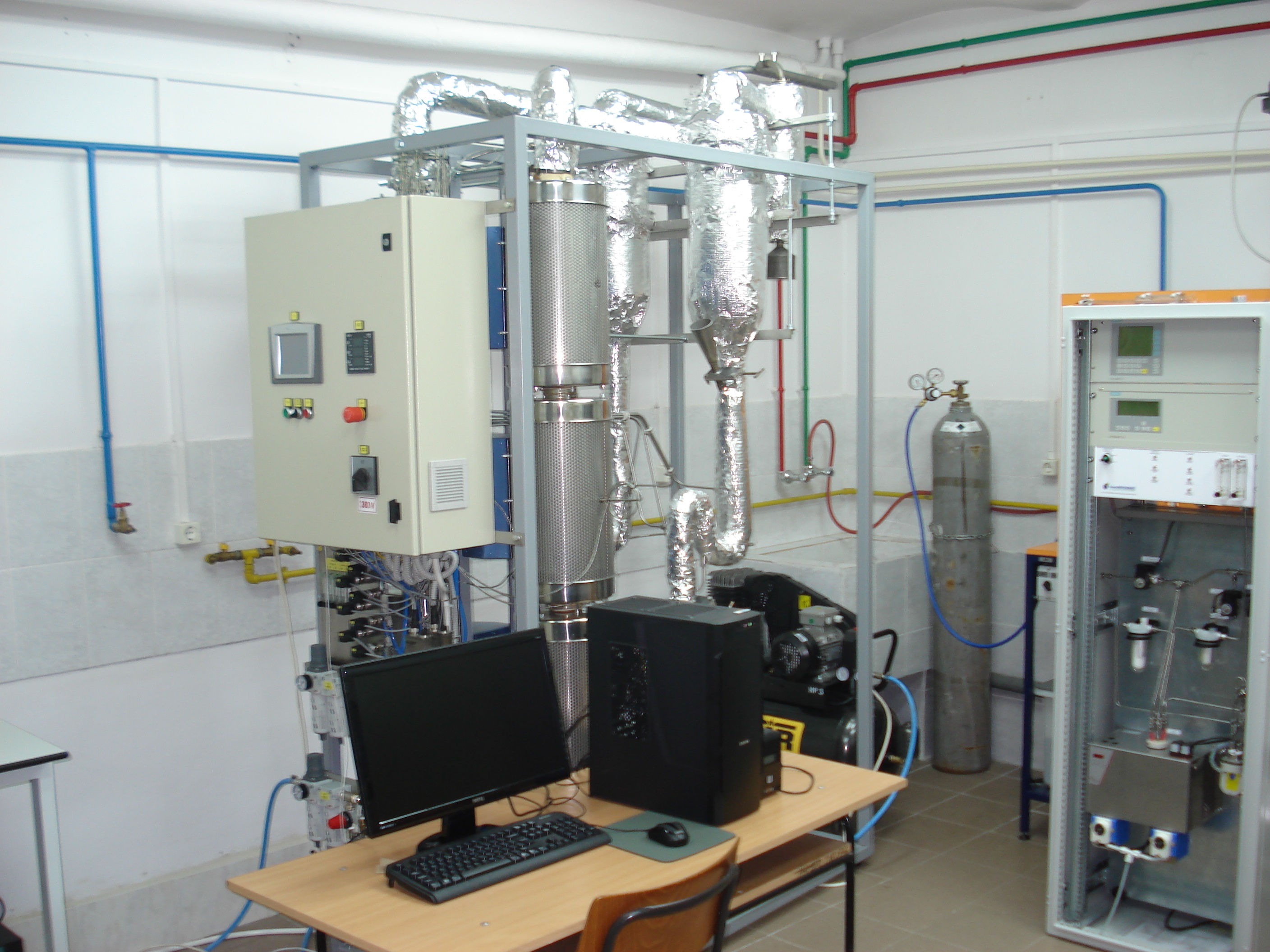
The laboratory kit for energy conversion systems with CO2 capture is composed of three independent systems as follow:
– An equipment with two interconnected fluidized bed reactors (each of 1500 mm length and 30 mm in diameter) able to operate up to 1200oC and around atmospheric pressure. The kit is supplied with gas suppliers (from cylinders and air compressor), flowmeters, pressure and temperature indicators, conditioning & prelevation points for gas samples as well as monitoring & control with computer (including SCADA software);
– An equipment with one fixed bed reactor (1000 mm length and 30 mm in diameter) able to operate up to 1200oC and around atmospheric pressure. The kit is supplied with gas suppliers (from cylinders and air compressor), flowmeters, pressure and temperature indicators, conditioning & prelevation points for gas samples as well as monitoring & control with computer (including SCADA software);
– An equipment with one fixed bed reactor (300 mm length and 10 mm in diameter) able to operate up to 1200oC and around atmospheric pressure. The kit is supplied with gas suppliers (from cylinders and air compressor), flowmeters, pressure and temperature indicators, conditioning & prelevation points for gas samples as well as monitoring & control with computer (including SCADA software).
All three units are serviced by a steam generator, a Siemens online gas analyzer (with TCD and IR detectors) as well as a Perkin-Elmer gas chromatograph (TCD and FID detectors).
Research unit: Computer Aided Process Engineering Research Centre
The operation and development mission of the Computer Aided Process Engineering Research Centre aims for: Increasing the role and importance of the applied scientific research in the field of chemical (process) engineering and of the multidisciplinary scientific research at Babes-Bolyai University, using computer aided tools; Development of the scientific-research oriented human resource by valorisation of the experienced researchers’ knowledge for supporting the formation of high skilled young researchers; Increasing the competiveness of the Computer Aided Process Engineering Research Centre on the market of high technology services and products; Strengthening the collaboration connections with the traditional industrial partners (such as EMERSON, ROMPETROL, SAINT GOBAIN) and identification of new ones (enabling access to the national and international founding sources).
Location: Faculty of Chemistry and Chemical Engineering, Lab. 13
Contact person: Prof.dr. Cormoş Călin
”Prof. Constantin Crăciun” Electron Microscopy Laboratory
Scanning Electron Microscope (SEM): Jeol JSM 5510 LV with Elemental Analysis System (EDX) and Inca 300

The JEOL JSM-5510LV operates between 0.5 and 30 kV and has a resolution of 3.5 nm at 30 kV in high vacuum mode and 4.5 nm in low vacuum mode
Research unit: ”Prof. Constantin Crăciun” Electron Microscopy Laboratory
The ”Prof. Constantin Crăciun” Electron Microscopy Laboratory is a research base with multiple users, designed for high performance scientific research and education/specialisation of young researchers. Its activities cover a large number of scientific domains: physics, chemistry, geology, mineralogy, geography, animal and plant biology (with special emphasis on cellular and molecular biology, biochemistry and physiology) pharmacology, human and animal medicine, ecology and environment protection, as well as industry areas, such as: food technology, mining, oil industry, metallurgy and chemical industry.
Location: Faculty of Biology and Geology, semi-basement
Contact person: Conf.dr. Lucian Barbu-Tudoran
Transmission Electron Microscope (TEM): Jeol JEM 1010 with Mega View III CCD Camera
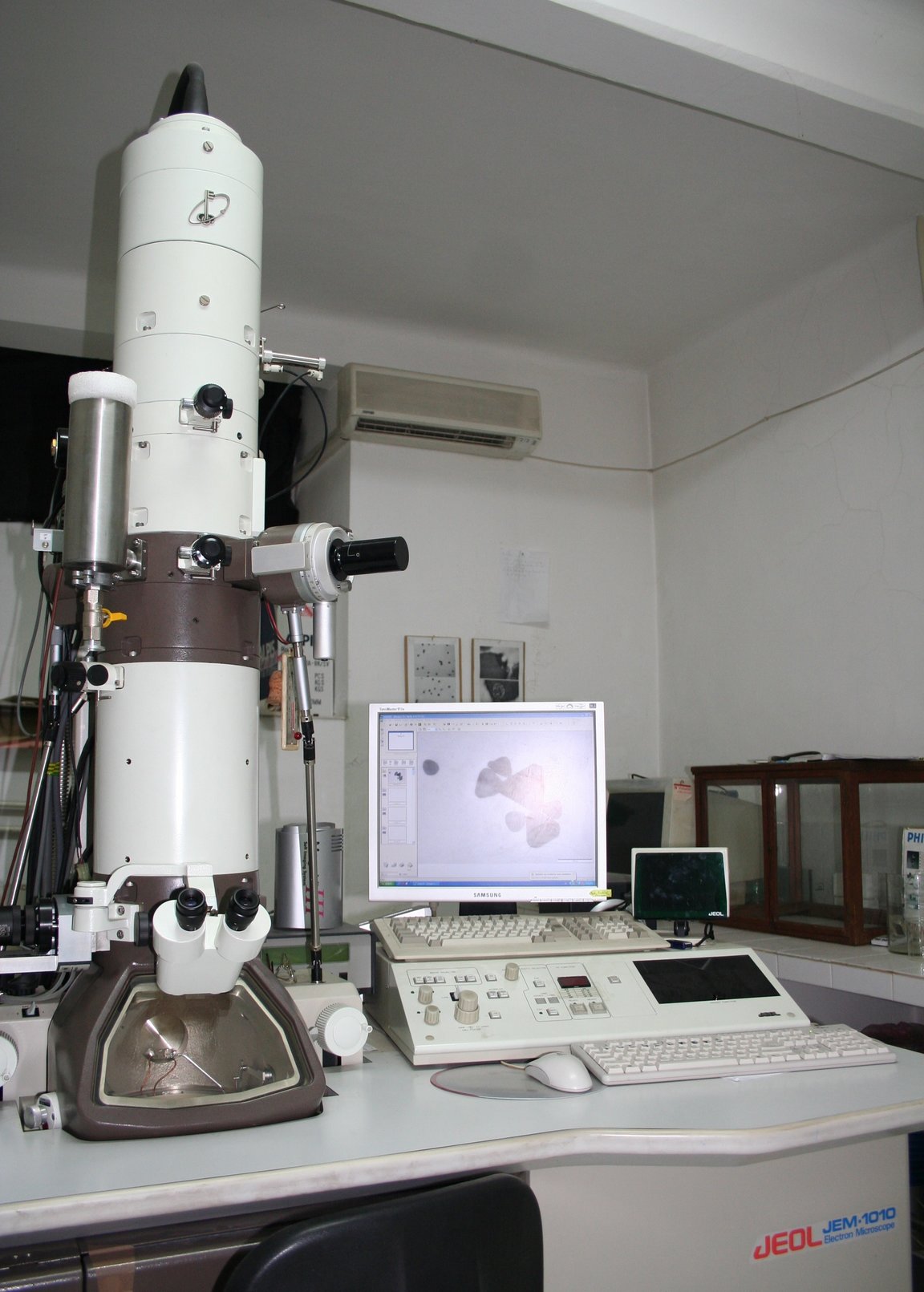
Compact transmission electron microscope (TEM) ideal for life science as well as material science applications thanks to high contrast objective lens pole piece and the operating voltage that varies from 40kV to 100 kV
Research unit: ”Prof. Constantin Crăciun” Electron Microscopy Laboratory
The ”Prof. Constantin Crăciun” Electron Microscopy Laboratory is a research base with multiple users, designed for high performance scientific research and education/specialisation of young researchers. Its activities cover a large number of scientific domains: physics, chemistry, geology, mineralogy, geography, animal and plant biology (with special emphasis on cellular and molecular biology, biochemistry and physiology) pharmacology, human and animal medicine, ecology and environment protection, as well as industry areas, such as: food technology, mining, oil industry, metallurgy and chemical industry.
Location: Faculty of Biology and Geology, semi-basement
Contact person: Conf.dr. Lucian Barbu-Tudoran
The International Institute for the Advanced Studies of Psychotherapy and Applied Mental Health
The Platform for Robotics/Robotherapy and Virtual Reality Enhanced Therapy – The PsyTech-MATRIX PLATFORM
The Platform for Robotics/Robotherapy and Virtual Reality Enhanced Therapy – The PsyTech-MATRIX PLATFORM – is the state of the art research, academic, and services infrastructure of the International Institute for the Advanced Studies of Psychotherapy and Applied Mental Health at UBB. It is a part of the “Star-Gate Psy” Project of the Insititute to seek out new technologies to improve and develop human mind and human potential. It is also the research infrastructure of the Robotherapy and Virtual Reality Therapy Program (Program director: Dr. Daniel David) in the Departament of Clinical Psychology and Psychotherapy at the UBB.
Research unit: The International Institute for the Advanced Studies of Psychotherapy and Applied Mental Health
The International Institute for the Advanced Studies of Psychotherapy and Applied Mental Health (International Institute) is an excellence postdoctoral and research Institute. More precisely, the institute is the international spearhead – an academic spin-off – of the Department of Clinical Psychology and Psychotherapy and the research platform of the Evidence-based psychological assessment and interventions doctoral school of the department. The Institute has two world-class research Platforms: (1) Robotherapy and Virtual Reality Therapy Platform (the Matrix Platform) and (2) The Platform for Advanced Imaging – MRI/EEG – in Clinical Cognitive Sciences (the SkyRa Platform) and an advanced Clinical Research Unit.
Location: Faculty of Psychology and Educational Sciences, AVALON Building
Contact person: Prof.dr. Anca Dobrean
3 Tesla Siemens Skyra MRI with large bore (70 cm)
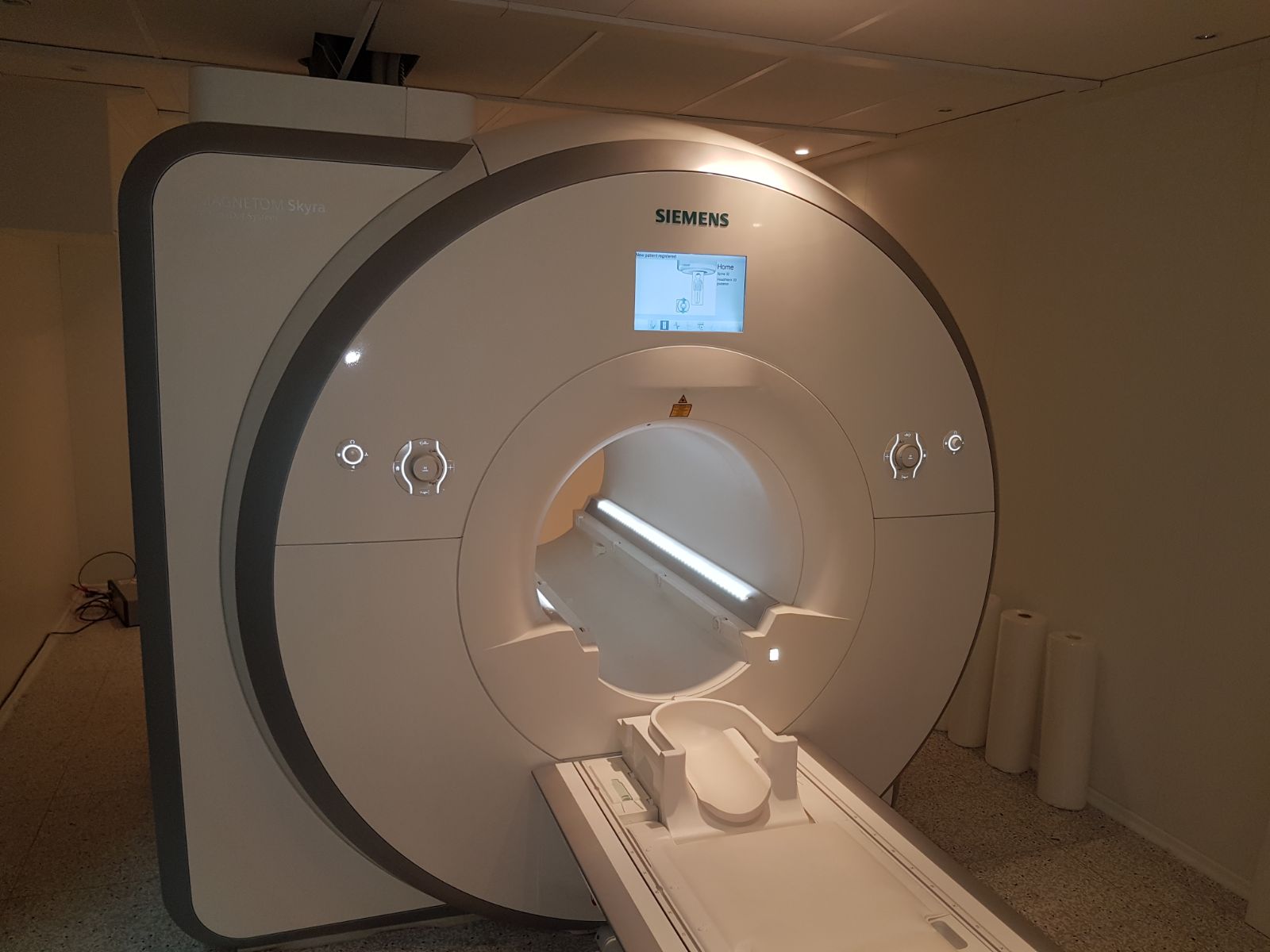
The MRI equipment consists of a 3 Tesla Siemens Skyra MRI with large bore (70 cm) and 32 channel head coil. Spinal coil, body coils and flexible coils are also available for other clinical applications. Available imagistic applications include angiography, cardiology, abdominal, perfusion, diffusion tensor imaging, nervous tract visualization, functional imaging, spectroscopy and dynamic breast imaging. Parallel acquisition techniques and movement corrections are included (all coils are compatible for parallel acquisition).
Research unit: The International Institute for the Advanced Studies of Psychotherapy and Applied Mental Health
The International Institute for the Advanced Studies of Psychotherapy and Applied Mental Health (International Institute) is an excellence postdoctoral and research Institute. More precisely, the institute is the international spearhead – an academic spin-off – of the Department of Clinical Psychology and Psychotherapy and the research platform of the Evidence-based psychological assessment and interventions doctoral school of the department. The Institute has two world-class research Platforms: (1) Robotherapy and Virtual Reality Therapy Platform (the Matrix Platform) and (2) The Platform for Advanced Imaging – MRI/EEG – in Clinical Cognitive Sciences (the SkyRa Platform) and an advanced Clinical Research Unit.
Research unit: The International Institute for the Advanced Studies of Psychotherapy and Applied Mental Health
Location: “Raluca Ripan” Institute for Research in Chemistry
Contact person: Prof.dr. Anca Dobrean
Analytical Optical Spectrometry Laboratory
High-Resolution Continuum Source Atomic Absorption Spectrometer contrAA 300
Specifications: High resolution double monochromator; Echelle grating; Spectral range: 185 – 900 nm; Resolution: 2pm/200 nm; CCD Detector; Xenon Lamp; Detection limits: 10 – 100 ng mL-1
Application: Multi-element simultaneous analysis of environmental samples (soil, sediments, water), liquid and granular wastes; Multi-element simultaneous analysis of industrial samples; Speciation analysis by sequential extractions
Research unit: Analytical Optical Spectrometry Laboratory
Analytical Optical Spectrometry group‘s research program is held in two directions: a)Analytical methods by optical spectrometry and b) Development of analytical instrumentation for the environmental quality control Within the first direction the research is oriented toward the development of high sensitive analytical methodologies based on inductively coupled plasma atomic emission spectrometry and flame atomic absorption spectrometry with application in environment monitoring. The research program is focused on implementation of analytical methods for multielemental analysis of environmental samples, food, beverage, plastics or biodegradable packages and waste. Determination of Hg, As and Sb in such samples is carried out after chemical vapor generation. In the filed of analytical instrumentation, the AOS group has interests in miniaturized spectrometric systems with microplasma sources, electrothermal vaporization of the sample and multichannel simultaneous detection using microspectrometers.
Location: Faculty of Chemistry and Chemical Engineering, Lab. 108
Contact person: Prof.dr. Frenţiu Tiberiu
Simultaneous Atomic Emission Spectrometer with Inductively Coupled Plasma SPRECTRO CIROSCCD
Specifications: Simultaneous detection using CCD transducers; Spectral range: 160 – 800 nm; ICP atomization source (1400 W, 27.12 MHz, Ar consumption: 14 L min-1 ); Detection limits: 0.1 – 100 ng mL-1; Axial plasma viewing; Sample introduction: pneumatic nebulization, cross-flow design; Hydride generation technique
Application: Multi-element simultaneous analysis of environmental samples (soil, sediments, water), liquid and granular wastes; Multi-element simultaneous analysis of industrial samples; Determination of As, Sb, Bi, Hg following derivatization by hydride generation or cold vapor technique; Speciation analysis by sequential extractions
Standard: Determination of 33 elements by inductively coupled plasma atomic emission spectroscopy. Procedure cf. EN ISO 11885:1997
Research unit: Analytical Optical Spectrometry Laboratory
Analytical Optical Spectrometry group‘s research program is held in two directions: a)Analytical methods by optical spectrometry an b) Development of analytical instrumentation for the environmental quality control Within the first direction the research is oriented toward the development of high sensitive analytical methodologies based on inductively coupled plasma atomic emission spectrometry and flame atomic absorption spectrometry with application in environment monitoring. The research program is focused on implementation of analytical methods for multielemental analysis of environmental samples, food, beverage, plastics or biodegradable packages and waste. Determination of Hg, As and Sb in such samples is carried out after chemical vapor generation. In the filed of analytical instrumentation, the AOS group has interests in miniaturized spectrometric systems with microplasma sources, electrothermal vaporization of the sample and multichannel simultaneous detection using microspectrometers.
Location: Faculty of Chemistry and Chemical Engineering, Lab. 108
Contact person: Prof.dr. Frenţiu Tiberiu
Supramolecular Organic and Organometallic Chemistry Centre
Mass Spectrometer LC-MS Agilent 6320
Atmospheric pressure ionization sources: ESI, APCI
Research unit: Supramolecular Organic and Organometallic Chemistry Centre
Domains of activity: Chemistry (organic chemistry, organometallic chemistry, coordination chemistry, supramolecular chemistry, structural analysis). Design, synthesis, spectroscopic characterization and investigation of the properties of novel (i) technomimetic molecules of organic compounds, (ii) potential precursors for ligands with intramolecular coordination in hypervalent organometallic compounds of main group metals, (iii) homo and heterometallic supramolecular systems, including organometallic species, as well as (iv) studies of dynamic molecular recognition processes which lead to “intelligent” materials.
Location: Faculty of Chemistry and Chemical Engineering, room 205
Contact person: Prof.dr. Grosu Ion
Mass Spectrometer LC-MS Thermo Scientific LTQ Orbitrap XL
Atmospheric pressure ionization sources: ESI, Nano-ESI, APCI, MALDI
Research unit: Supramolecular Organic and Organometallic Chemistry Centre
Domains of activity: Chemistry (organic chemistry, organometallic chemistry, coordination chemistry, supramolecular chemistry, structural analysis). Design, synthesis, spectroscopic characterization and investigation of the properties of novel (i) technomimetic molecules of organic compounds, (ii) potential precursors for ligands with intramolecular coordination in hypervalent organometallic compounds of main group metals, (iii) homo and heterometallic supramolecular systems, including organometallic species, as well as (iv) studies of dynamic molecular recognition processes which lead to “intelligent” materials.
Location: Faculty of Chemistry and Chemical Engineering, room 206
Contact person: Prof.dr. Grosu Ion
Glovebox Jacomex P(SYS)
System for manipulation and storage of organometallic and inorganic compounds sensitive to moisture and air, equipped with refrigerator and recirculation and purification system of the inert gas (argon).
Research unit: Supramolecular Organic and Organometallic Chemistry Centre
Domains of activity: Chemistry (organic chemistry, organometallic chemistry, coordination chemistry, supramolecular chemistry, structural analysis). Design, synthesis, spectroscopic characterization and investigation of the properties of novel (i) technomimetic molecules of organic compounds, (ii) potential precursors for ligands with intramolecular coordination in hypervalent organometallic compounds of main group metals, (iii) homo and heterometallic supramolecular systems, including organometallic species, as well as (iv) studies of dynamic molecular recognition processes which lead to “intelligent” materials.
Location: Faculty of Chemistry and Chemical Engineering, Radiochemistry Building, room 269
Contact person: Prof.dr. Silvestru Anca
SMART APEX CCD system (single-crystal X-ray diffractometer) (Bruker AXS GmbH)
Molecular structure determinations by single-crystal X-ray diffraction for inorganic, organic or organometallic compounds
Determination of crystal size and lattice parameters
Technical characteristics: SMART APEX CCD Area Detector; D8 Goniometer; Graphite Monochromator; Rotary Shutter; X-Ray Generator Kristalloflex K760-80; X-Ray Diffraction Tube KFN-Mo-2K-90; Kryoflex System Low Temperature Determinations; SAINT Data Reduction Software; SHELXTL for WINDOWS.
Research unit: Supramolecular Organic and Organometallic Chemistry Centre
Domains of activity: Chemistry (organic chemistry, organometallic chemistry, coordination chemistry, supramolecular chemistry, structural analysis). Design, synthesis, spectroscopic characterization and investigation of the properties of novel (i) technomimetic molecules of organic compounds, (ii) potential precursors for ligands with intramolecular coordination in hypervalent organometallic compounds of main group metals, (iii) homo and heterometallic supramolecular systems, including organometallic species, as well as (iv) studies of dynamic molecular recognition processes which lead to “intelligent” materials.
Location: Faculty of Chemistry and Chemical Engineering, room 03
Contact person: Prof.dr. Silvestru Cristian
Biocatalysis and Biotransformations Research Center
LC-MS analysis platform
Research unit: Biocatalysis and Biotransformations Research Center
The research activity at the Biocatalysis and Biotransformations scientific research center is focused on developing advanced technologies that use biocatalysts for the efficient production of high utility organic compounds. The used biocatalysts are commercially available enzymes and/or enzymes modified by us through genetic engineering techniques using evolutionary and rational algorithms. Furthermore we employ various immobilization techniques which improve the operational stability of the enzymes.
Location: Faculty of Chemistry and Chemical Engineering, room 32-35
Contact person: Prof.dr. Irimie Florin Dan
Prometheus-NT 48
Differential Scanning Fluorimeter which allows the high-throughput determination of protein stabilities, based on the detection of the intrinsec fluorescence of Trp and Tyr residues of proteins (sample concentration range: 5 µg/ml – 250 mg/ml).
Research unit: Biocatalysis and Biotransformations Research Center
The research activity at the Biocatalysis and Biotransformations scientific research center is focused on developing advanced technologies that use biocatalysts for the efficient production of high utility organic compounds. The used biocatalysts are commercially available enzymes and/or enzymes modified by us through genetic engineering techniques using evolutionary and rational algorithms. Furthermore we employ various immobilization techniques which improve the operational stability of the enzymes.
Location: Faculty of Chemistry and Chemical Engineering, room 32-35
Contact person: Prof.dr. Irimie Florin Dan
Gas chromatograph GC Agilent MF 235330
FID detector, autosampler, Chemstation software –equipped with diverse standard and chiral columns.
Research unit: Biocatalysis and Biotransformations Research Center
The research activity at the Biocatalysis and Biotransformations scientific research center is focused on developing advanced technologies that use biocatalysts for the efficient production of high utility organic compounds. The used biocatalysts are commercially available enzymes and/or enzymes modified by us through genetic engineering techniques using evolutionary and rational algorithms. Furthermore we employ various immobilization techniques which improve the operational stability of the enzymes.
Location: Faculty of Chemistry and Chemical Engineering, room 32-35
Contact person: Prof.dr. Irimie Florin Dan
Transmission electron microscope TEM Hitachi H-7650
Registration of high resolution and contrast images, necessary for analytical, biomedical, materials sciences.
Research unit: The International Institute for the Advanced Studies of Psychotherapy and Applied Mental Health
The research activity at the Biocatalysis and Biotransformations scientific research center is focused on developing advanced technologies that use biocatalysts for the efficient production of high utility organic compounds. The used biocatalysts are commercially available enzymes and/or enzymes modified by us through genetic engineering techniques using evolutionary and rational algorithms. Furthermore we employ various immobilization techniques which improve the operational stability of the enzymes.
Location: “Raluca Ripan” Institute for Research in Chemistry
Contact person: Conf.dr. Katona Gabriel
The Research Center on Fundamental and Applied Heterochemistry (METALOMICA) and Free Radicals Research Center
Laboratory of EPR spectroscopy
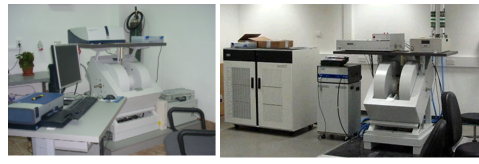 The laboratory’s main objective is research in the field of electron spin resonance/electron paramagnetic resonance. The target is advanced research with applications in materials science,
The laboratory’s main objective is research in the field of electron spin resonance/electron paramagnetic resonance. The target is advanced research with applications in materials science,
physics, chemistry, biology, medicine, environment – using electron spin resonance / electron paramagnetic resonance (EPR, ESR), including pulsed procedures such as Electron Spin Echo Envelope Modulation (ESEEM), 2D HYperfine Sub-level CORrElation (HYSCORE), ENDOR, PELDOR as well as experiments at variable temperature (Nitrogen and Helium liquid).
Research unit: Research Center on Fundamental and Applied Heterochemistry – METALOMICA, Free Radicals Research Center
The Research Center on Fundamental and Applied Heterochemistry (METALOMICA) deals with the role of heteroatoms in chemistry – form heterocyclic chemistry to organometallic, inorganic and bio-inorganic systems. The topics of research and analysis generally pertain to the pervasive role of metals in catalysis (as standard reagents or as targets for developing new methodologies), in mechanistic investigations, in the development or exploration of novel structures and materials, in drug design, and/or in biological interactions of endogenous or exogenous (e.g., drugs, pollutants) metal- containing components.
Free Radicals Research Center‘s main objectives are the interdisciplinary theoretical and experimental studies of free radicals in bio-material physics, bio-pharmaceutical compounds, in the physics and chemistry of the environment, catalytically reactions, polymerization reactions, human, animal and vegetal physiopathology and other systems which involves the presence of free radicals.
Location: Faculty of Chemistry and Chemical Engineering, room 01/03
Contact person: Conf.dr. Silaghi- Dumitrescu Radu / Conf.dr. Miclăuş Vasile / Prof.dr. Damian Grigore
The Research Center on Fundamental and Applied Heterochemistry (METALOMICA)
LABstar Glove Box Workstation
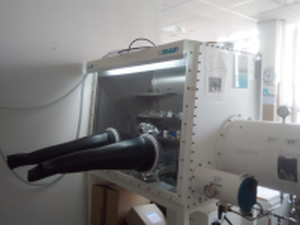
Used for handling of moisture and air sensitive compounds under inert (Ar) atmosphere. The Glove box systems has: interior working dimensions of 1200 x 780 x 920 mm (WxDxH); adjustable metal shelves; 2 antechambers (390x 600 mm and 120 x 400 mm); O2 and H2O analyzers (0-500 ppm and 0-1000 ppm); HEPA filters; PLC controlled gas purifying system.
Research unit: Research Center on Fundamental and Applied Heterochemistry – METALOMICA
The Research Center on Fundamental and Applied Heterochemistry (METALOMICA) deals with the role of heteroatoms in chemistry – form heterocyclic chemistry to organometallic, inorganic and bio-inorganic systems. The topics of research and analysis generally pertain to the pervasive role of metals in catalysis (as standard reagents or as targets for developing new methodologies), in mechanistic investigations, in the development or exploration of novel structures and materials, in drug design, and/or in biological interactions of endogenous or exogenous (e.g., drugs, pollutants) metal- containing components.
Location: Faculty of Chemistry and Chemical Engineering, lab. 202-203
Contact person: Conf.dr. Nemeș Gabriela
Automatic Solvent Purification System (MB-SPS-800-AUTO)
Automated solvent purifying system with 5 working lines (THF, Dichloromethane, toluene, diethyl ether and pentane), with automated control system assured through a touchpanel. The system can dispense up to 17 liters per solvent line (the maximum capacity of the solvent tanks), with a maximum flow of 2 liters per minute.
Research unit: Research Center on Fundamental and Applied Heterochemistry – METALOMICA
The Research Center on Fundamental and Applied Heterochemistry (METALOMICA) deals with the role of heteroatoms in chemistry – form heterocyclic chemistry to organometallic, inorganic and bio-inorganic systems. The topics of research and analysis generally pertain to the pervasive role of metals in catalysis (as standard reagents or as targets for developing new methodologies), in mechanistic investigations, in the development or exploration of novel structures and materials, in drug design, and/or in biological interactions of endogenous or exogenous (e.g., drugs, pollutants) metal- containing components.
Location: Faculty of Chemistry and Chemical Engineering, lab. 202-203
Contact person: Conf.dr. Nemeș Gabriela
Double manifold systems (using Ar as inert gas)
The laboratory has 4 fumehood workstations equipped with Vacuum/inert gas manifold systems (Schlenk lines). All workstations are equipped with double stage vacuum pumps (10-4mBar) outfitted with electronic manometers.
Research unit: Research Center on Fundamental and Applied Heterochemistry – METALOMICA
The Research Center on Fundamental and Applied Heterochemistry (METALOMICA) deals with the role of heteroatoms in chemistry – form heterocyclic chemistry to organometallic, inorganic and bio-inorganic systems. The topics of research and analysis generally pertain to the pervasive role of metals in catalysis (as standard reagents or as targets for developing new methodologies), in mechanistic investigations, in the development or exploration of novel structures and materials, in drug design, and/or in biological interactions of endogenous or exogenous (e.g., drugs, pollutants) metal- containing components.
Location: Faculty of Chemistry and Chemical Engineering, lab. 202-203
Contact person: Conf.dr. Nemeș Gabriela
IBM BladeCenter H high performance computing cluster
Technical features: 5 blade chassis, each with 14 blades distributed in two racks, each blade has 2xQuadCore 4GHz CPU’s, 2X160GB HDD, 4x2GB RAM memory, storage server 3TB, optical fiber connections between the server and blade systems, UPS back-up up to 36 minutes. The computing software used by our group include Gaussian’09, gamess, OpenMopac(2009/2007), NWChem, orca (accessible on the IBM HPC Cluster), Spartan06, G03W and GaussView4.1.
Research unit: Research Center on Fundamental and Applied Heterochemistry – METALOMICA
The Research Center on Fundamental and Applied Heterochemistry (METALOMICA) deals with the role of heteroatoms in chemistry – form heterocyclic chemistry to organometallic, inorganic and bio-inorganic systems. The topics of research and analysis generally pertain to the pervasive role of metals in catalysis (as standard reagents or as targets for developing new methodologies), in mechanistic investigations, in the development or exploration of novel structures and materials, in drug design, and/or in biological interactions of endogenous or exogenous (e.g., drugs, pollutants) metal- containing components.
Location: Faculty of Chemistry and Chemical Engineering, lab. 104
Contact person: Conf.dr. Nemeș Gabriela / Conf.dr. Silaghi- Dumitrescu Radu
Stopped-flow UV-vis and freeze-quench facility
 A stopped-flow UV-vis with diode array detector as well as monochromator, with freeze-quench capability, and with three-syringe sequential mixing capability (BioLogic, France), is available for use by interested researchers. Used for the investigation of the kinetics of very rapid reactions. This instrument is one of the best equipments in this field available in the present. It allows fast mixing and observation of the kinetics of the reaction after only 0.45 miliseconds from mixing, at temperatures between -20ºC – +60ºC. Features: 3 or 4 independently controlled syringes and 2 or 3 mixers, Dead time down to 0.25 ms with the microvolume cuvette
A stopped-flow UV-vis with diode array detector as well as monochromator, with freeze-quench capability, and with three-syringe sequential mixing capability (BioLogic, France), is available for use by interested researchers. Used for the investigation of the kinetics of very rapid reactions. This instrument is one of the best equipments in this field available in the present. It allows fast mixing and observation of the kinetics of the reaction after only 0.45 miliseconds from mixing, at temperatures between -20ºC – +60ºC. Features: 3 or 4 independently controlled syringes and 2 or 3 mixers, Dead time down to 0.25 ms with the microvolume cuvette
Standard Stopped-Flow configuration for all optical modes : absorbance, fluorescence, circular dichroism, fluorescence anisotropy.
A range of observation cuvettes
Research unit: Research Center on Fundamental and Applied Heterochemistry – METALOMICA
The Research Center on Fundamental and Applied Heterochemistry (METALOMICA) deals with the role of heteroatoms in chemistry – form heterocyclic chemistry to organometallic, inorganic and bio-inorganic systems. The topics of research and analysis generally pertain to the pervasive role of metals in catalysis (as standard reagents or as targets for developing new methodologies), in mechanistic investigations, in the development or exploration of novel structures and materials, in drug design, and/or in biological interactions of endogenous or exogenous (e.g., drugs, pollutants) metal- containing components.
Location: Faculty of Chemistry and Chemical Engineering, room 54
Contact person: Conf.dr. Silaghi- Dumitrescu Radu
Research Institute for Sustainability and Disaster Management based on High Performance Computing
HPC - High Performance Computing Center
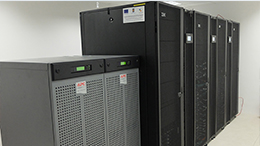 Research activities: Process performance analysis; Data traffic optimization; Analysis/enhancement of cluster administration platform; Automatic processor cluster management; Task planning in massively distributed systems; Study of optimization methods for resource management in order to improve the computing power of the HPC system and to reduce energy consumption.
Research activities: Process performance analysis; Data traffic optimization; Analysis/enhancement of cluster administration platform; Automatic processor cluster management; Task planning in massively distributed systems; Study of optimization methods for resource management in order to improve the computing power of the HPC system and to reduce energy consumption.
Research unit: Research Institute for Sustainability and Disaster Management based on High Performance Computing
ISUMADECIP provides the framework for interdisciplinary research, setting the basis for addressing challenges induced by the complex disaster management process. The Institute operates as a research unit dealing with topics like causes and consequences of various types of disasters, short-, medium- and long-term effects on the population, economy and environment and appropriate management strategies.
Location: Faculty of Economics and Business Administration
Contact person: Prof.dr. Silaghi Gheorghe / Conf.dr. Niculescu Virginia
LR231- D300 model multi- wave length Raman Depolarization LIDAR
Active remote sensing instrument for vertical atmospheric aerosol profiling 3β, 2α, 1δ
Research unit: Research Institute for Sustainability and Disaster Management based on High Performance Computing
ISUMADECIP provides the framework for interdisciplinary research, setting the basis for addressing challenges induced by the complex disaster management process. The Institute operates as a research unit dealing with topics like causes and consequences of various types of disasters, short-, medium- and long-term effects on the population, economy and environment and appropriate management strategies.
Location: “Raluca Ripan” Institute for Research in Chemistry
Contact person: Lect.dr. ing. Nicolae Ajtai
NMR Spectroscopy Laboratory
Integrated NMR spectroscopy system
This NMR system is composed by two last generation Bruker Avance III NMR spectrometers with ultrashielded Ascend 400 MHz and 600 Mhz magnets.
Research unit: NMR spectroscopy laboratory
This NMR system is operated by PhD and PhD candidates in order to validate the structure of synthesized compounds obtained in the preparative stages of the researches. Some of the main performances are described bellow: Ultrashielded superconducting magnets; automatic measurement of cryo fluids (liquid nitrogen and helium); Z gradients; VTU experiments. The applicability is not limited only to the characterization of organic or organometallic synthesis compounds (new compounds in the case of research activities, or compounds obtained by repeating syntheses in the
case of teaching activities), the NMR infrastructure being decisive also in order to establish the structures of natural products and to confirm new products resulting from biochemical syntheses.
Location: Faculty of Chemistry and Chemical Engineering, lab. 4
Contact person: Dr. Porumb Dan
Gas-liquid chromatography and mass spectrometry laboratory
Elemental Analyzer- FLASH EA 1112
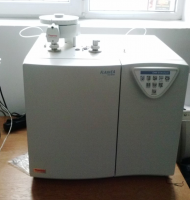 The FlashEA 1112 is based on the well-known Flash Dynamic Combustion method, which produces complete combustion of the sample within a high temperature reactor, followed by an accurate and precise determination of the elemental gases produced. The method is rapid, less than 7 minutes for a complete sample characterization, and easily automated with solid autosampler.
The FlashEA 1112 is based on the well-known Flash Dynamic Combustion method, which produces complete combustion of the sample within a high temperature reactor, followed by an accurate and precise determination of the elemental gases produced. The method is rapid, less than 7 minutes for a complete sample characterization, and easily automated with solid autosampler.
Suitable for organic or inorganic samples, it takes advantage of the generation (for a few seconds) of a very high temperature into the oxidation reactor, and allows the complete conversion of all samples. A dedicated chromatography column connected to a highly sensitive thermal conductivity detector ensures a wide detection range from 100 ppm to 100 % for Carbon, Hydrogen, Sulfur and Nitrogen determinations.
Research unit: Gas-liquid chromatography and mass spectrometry laboratory
GC-MS combines the features of gas-liquid chromatography (GC) and mass spectrometry (MS). This makes it possible to identify different substances within a test sample. GC-MS has many uses include drug detection, fire investigation, environmental analysis and it can also be used to identify unknown samples. In the MS part we can select between Electron Impact (EI), Chemical ionization (CI) and Negative Chemical Ionization (NCI) modes. The analysis can be done with simultaneous Scan/SIM Modes – enable detailed information on compounds of interest without sacrificing data across the entire mass spectrum. The sample introductions can be done in two different ways: by automatic injection at the GC part and by direct introduction in MS part for organic compounds with unknown properties. The automatic injection can be performed in function of the concentration and the type of sample: split/splitless and direct mode. The obtained results can be processed using the library search options.
Location: Faculty of Chemistry and Chemical Engineering, room 2
Contact person: Prof.dr. Silaghi Dumitrescu Luminița
Bruker Vector 22 FT-IR spectrometer
The Vector 22 is a mid-IR spectrometer with a full-sized sample compartment 8″ by 8″ working area and a kinematic baseplate that is capable of accommodating most standard sampling accessories.
Research unit: Gas-liquid chromatography and mass spectrometry laboratory
GC-MS combines the features of gas-liquid chromatography (GC) and mass spectrometry (MS). This makes it possible to identify different substances within a test sample. GC-MS has many uses include drug detection, fire investigation, environmental analysis and it can also be used to identify unknown samples. In the MS part we can select between Electron Impact (EI), Chemical ionization (CI) and Negative Chemical Ionization (NCI) modes. The analysis can be done with simultaneous Scan/SIM Modes – enable detailed information on compounds of interest without sacrificing data across the entire mass spectrum. The sample introductions can be done in two different ways: by automatic injection at the GC part and by direct introduction in MS part for organic compounds with unknown properties. The automatic injection can be performed in function of the concentration and the type of sample: split/splitless and direct mode. The obtained results can be processed using the library search options.
Location: Faculty of Chemistry and Chemical Engineering, room 139
Contact person: Prof.dr. Silaghi Dumitrescu Luminița
Gas Cromatograph with Mass Spectrometer Shimadzu QP 2010
Packed with advanced features, including an extended mass range from 1.5 to 1024 Daltons and optional Positive (PCI) and Negative Chemical Ionization (NCI), the QP-2010 provides users with excellent speed and sensitivity, making it ideal for many applications, including forensic analyses, drug testing, environmental monitoring, component identification, and product impurity identification. Features: High-Speed GCMS; The QP-2010 provides optimum speed and separation performance analysis for all GCMS measurements. It provides acquisition speeds to 50 scans per second, which allows using the newest micro-bore columns to improve sample throughput with data quality not attainable before. Thousands of samples can be run without operator intervention using the sample queuing software. Easy Switching Between EI, PCI and NCI Modes; The QP-2010 NCI option has a unique advanced ion source design. Now you can analyze compounds in CI mode and then in qualitative EI or NCI mode, without changing ion source components. These methods can be switched automatically in the batch table.
Superior Vacuum; The QP-2010 is equipped with a high-capacity dual differential turbo-molecular pumping system. An ion gauge ensures the precise measurement of the source pressure. After maintenance is performed, the tandem (rotary and turbo) pump design generates a high vacuum in minutes.
Research unit: Gas-liquid chromatography and mass spectrometry laboratory
GC-MS combines the features of gas-liquid chromatography (GC) and mass spectrometry (MS). This makes it possible to identify different substances within a test sample. GC-MS has many uses include drug detection, fire investigation, environmental analysis and it can also be used to identify unknown samples. In the MS part we can select between Electron Impact (EI), Chemical ionization (CI) and Negative Chemical Ionization (NCI) modes. The analysis can be done with simultaneous Scan/SIM Modes – enable detailed information on compounds of interest without sacrificing data across the entire mass spectrum. The sample introductions can be done in two different ways: by automatic injection at the GC part and by direct introduction in MS part for organic compounds with unknown properties. The automatic injection can be performed in function of the concentration and the type of sample: split/splitless and direct mode. The obtained results can be processed using the library search options.
Location: Faculty of Chemistry and Chemical Engineering, room 205
Contact person: Prof.dr. Silaghi Dumitrescu Luminița
Preparative High Performance Liquid Cromatograph Agilent Technologies 1200 Series
Is a technique in analytical chemistry used to separate, identify, and quantify each component in a mixture. It relies on pumps to pass a pressurized liquid solvent containing the sample mixture through a column filled with a solid adsorbent material. The apparatus comprises an eluent degasser, a binary pump with a thermostated autosampler with 100 places for samples, automatic injection system, ELSD universal detector- with nitrogen generator- and detector for chiral molecules (chyralyser), respectively a fraction collector.
The ELSD detector allows recording / detection of chromatograms for any substance / mixture without being dependent on optical properties of the analysed compounds, by measuring the light scattered from the solid solute particles remaining after nebulization and evaporation of the mobile phase.
The fraction collector is designed for optimized fraction collection at flow rates between 100 μL/min and 10 mL/min.
Research unit: Gas-liquid chromatography and mass spectrometry laboratory
GC-MS combines the features of gas-liquid chromatography (GC) and mass spectrometry (MS). This makes it possible to identify different substances within a test sample. GC-MS has many uses include drug detection, fire investigation, environmental analysis and it can also be used to identify unknown samples. In the MS part we can select between Electron Impact (EI), Chemical ionization (CI) and Negative Chemical Ionization (NCI) modes. The analysis can be done with simultaneous Scan/SIM Modes – enable detailed information on compounds of interest without sacrificing data across the entire mass spectrum. The sample introductions can be done in two different ways: by automatic injection at the GC part and by direct introduction in MS part for organic compounds with unknown properties. The automatic injection can be performed in function of the concentration and the type of sample: split/splitless and direct mode. The obtained results can be processed using the library search options.
Location: Faculty of Chemistry and Chemical Engineering, room 144
Contact person: Prof.dr. Silaghi Dumitrescu Luminița
Microwave synthesis platform Anton Paar GmbH - Synthos 3000
Synthos 3000 is a high-performance microwave reactor for chemical synthesis. It enables direct scale-up of reactions from small batch sizes (in µL to mL range) up to liter volumes. Therefore optimized protocols can be directly scaled up using the same reactor without changing the reaction parameters. Synthos 3000 provides rotors that are especially designed for high-pressure applications. Sophisticated safety features allow safe operation at up to 80 bar and 300 °C, which opens up completely new dimensions in microwave-assisted chemical processing. Synthos 3000 delivers 1400 W of continuous, unpulsed microwave power via two magnetrons, therefore ensuring effective heating rates as well as smooth reaction control. Furthermore, the system provides optimum reproducibility for any synthesis.
Research unit: Gas-liquid chromatography and mass spectrometry laboratory
GC-MS combines the features of gas-liquid chromatography (GC) and mass spectrometry (MS). This makes it possible to identify different substances within a test sample. GC-MS has many uses include drug detection, fire investigation, environmental analysis and it can also be used to identify unknown samples. In the MS part we can select between Electron Impact (EI), Chemical ionization (CI) and Negative Chemical Ionization (NCI) modes. The analysis can be done with simultaneous Scan/SIM Modes – enable detailed information on compounds of interest without sacrificing data across the entire mass spectrum. The sample introductions can be done in two different ways: by automatic injection at the GC part and by direct introduction in MS part for organic compounds with unknown properties. The automatic injection can be performed in function of the concentration and the type of sample: split/splitless and direct mode. The obtained results can be processed using the library search options.
Location: Faculty of Chemistry and Chemical Engineering, room 139
Contact person: Prof.dr. Silaghi Dumitrescu Luminița
Research Center in Physical Chemistry
Scanning Probe Microscope, JEOL JSPM 4210: Atomic Force Microscope (AFM) and Scanning Tunneling Microscope (STM)
Technical characteristics / performances: Atomic Force Microscopy operates in AC (tapping) mode, Contact mode, Non-contact mode; Special scanning modes: magnetic AFM, conductive AFM; Nano mechanical properties (nano-mechanics) and force curves; Scanning Tunneling Microscopy; Imaging mode at atomic and nano size resolution;Fluid cell for imaging in fluid environment; Narrow area scanning
Research unit: Research Center in Physical Chemistry
The Center of Physical Chemistry assures the access of all interested members to modern investigation methods in: nanoscience, nanotechnology, physical chemistry, thermodynamics, chemical structure, colloidal and surface chemistry and chemistry of supramolecular polyfunctional systems, micro- and nano-structured thin films and advanced biocomposite and nano materials. Strategic equipments: atomic force microscopy (AFM), scanning tunneling microscopy (STM), self-assembly technique (Langmuir-Blodgett Technique: LBT) of thin films. Facilitated equipments: differential scanning calorimeter (DSC), UV-Vis spectrophotometer, as well as the pilot station, the synthesis reactor for nano materials with the necessary equipments: lyophilizator and sonicator for preparing aqueous dispersions of nano materials. These equipments lead to the increase of the quality and value of fundamental and applicative research, in maintaining scientific excellence, and in the access of our scientific publications to internationally prestigious ISI journals. The CECHIF-UBB also offers specialized services to other research institutes or SMEs involved in partnerships for scientific collaboration or to the teaching staff, students and doctoral students from our institution and other prestigious institutions in our country and abroad.
Location: “Raluca Ripan” Institute for Research in Chemistry , lab As2
Contact person: Prof.dr. Tomoaia Cotișel Maria/ Conf.dr. Mocanu Aurora
LANGMUIR-BLODGETT KSV 5000
Technical characteristics: Surface Pressure Measurements; The deposition of monolayers onto solid substrates with precise control of the monolayer thickness, homogeneous deposition of the monolayer over large areas and the possibility to make multilayer structures with varying layer composition; The production of so-called alternating layers which consist of two different kinds of amphiphilic molecules is also possible, using the double trough; Regular trough and double trough for alternating layers; Surface Potential Measurements
Research unit: Research Center in Physical Chemistry
The Center of Physical Chemistry assures the access of all interested members to modern investigation methods in: nanoscience, nanotechnology, physical chemistry, thermodynamics, chemical structure, colloidal and surface chemistry and chemistry of supramolecular polyfunctional systems, micro- and nano-structured thin films and advanced biocomposite and nano materials. Strategic equipments: atomic force microscopy (AFM), scanning tunneling microscopy (STM), self-assembly technique (Langmuir-Blodgett Technique: LBT) of thin films. Facilitated equipments: differential scanning calorimeter (DSC), UV-Vis spectrophotometer, as well as the pilot station, the synthesis reactor for nano materials with the necessary equipments: lyophilizator and sonicator for preparing aqueous dispersions of nano materials. These equipments lead to the increase of the quality and value of fundamental and applicative research, in maintaining scientific excellence, and in the access of our scientific publications to internationally prestigious ISI journals. The CECHIF-UBB also offers specialized services to other research institutes or SMEs involved in partnerships for scientific collaboration or to the teaching staff, students and doctoral students from our institution and other prestigious institutions in our country and abroad.
Location: Faculty of Chemistry and Chemical Engineering, lab 73
Contact person: Prof.dr. Tomoaia Cotișel Maria/ Conf.dr. Mocanu Aurora
ICIBNS
Scanning Electron Microscop FEI Quanta 3D FEG 200/600
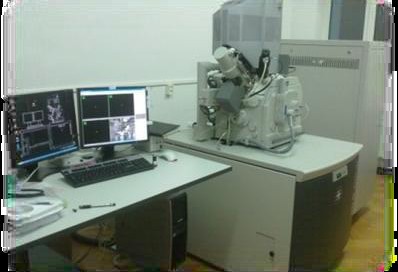
Working mode: high vacuum, low vacuum, ESEM
Detectors:EDT (Everhart Thornlez Detector), LVSED (Low Vacuum Secondary Electrons Detector), GSED (Gaseous Secondary Electron Detector); Platinum sediment/deposit; EDX system
Research unit: ICIBNS
Interdisciplinary Research Institute on Bio-Nano-Sciences of Babeş-Bolyai University was founded in 2001, under the name of Interdisciplinary Experimental Research Institute, as autonomous research and technological transfer unit. Its aim is to carry out interdisciplinary research in the most topical scientific and technological themes, belonging to Biosciences, Nanosciences and to the physical and chemical processes that took places at natural and nanostructured artificial systems interfaces. At the same time, our goal is to transfer the results obtained to potential local, national and international beneficiaries.
Location: ICI-BNS/Nanostructured Materials and Bionano interfaces Center, room S6
Contact person: Prof.Dr. Simon Simion
High resolution transmission electron microscope FEI Tecnai F20 FEG
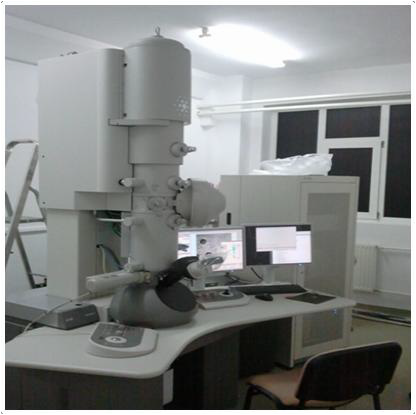
Accelerating voltage 200 KV, Eagle 4k acquisition CCD camera (high speed of response and high resolution), Sample holder with dual plane tilt, Elemental microanalysis system with dispersive X-ray (EDX)
Research unit: ICIBNS
Interdisciplinary Research Institute on Bio-Nano-Sciences of Babeş-Bolyai University was founded in 2001, under the name of Interdisciplinary Experimental Research Institute, as autonomous research and technological transfer unit. Its aim is to carry out interdisciplinary research in the most topical scientific and technological themes, belonging to Biosciences, Nanosciences and to the physical and chemical processes that took places at natural and nanostructured artificial systems interfaces. At the same time, our goal is to transfer the results obtained to potential local, national and international beneficiaries.
Location: ICI-BNS/Nanostructured Materials and Bionano interfaces Center, room S7
Contact person: Prof.Dr. Simon Simion
Device for measuring specific surface areas type M3 QSURF
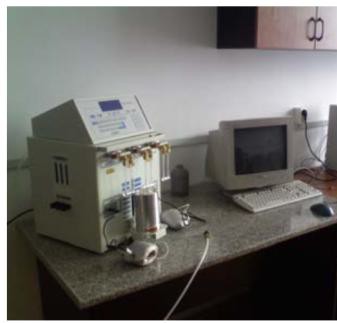 Specific surface areas ranging from 0.10 to 2000 m2/ g, Precision of 0.01 m2/ g, Automatic calibration, Maximum degassing temperature is 300 ° C.
Specific surface areas ranging from 0.10 to 2000 m2/ g, Precision of 0.01 m2/ g, Automatic calibration, Maximum degassing temperature is 300 ° C.
Research unit: ICIBNS
Interdisciplinary Research Institute on Bio-Nano-Sciences of Babeş-Bolyai University was founded in 2001, under the name of Interdisciplinary Experimental Research Institute, as autonomous research and technological transfer unit. Its aim is to carry out interdisciplinary research in the most topical scientific and technological themes, belonging to Biosciences, Nanosciences and to the physical and chemical processes that took places at natural and nanostructured artificial systems interfaces. At the same time, our goal is to transfer the results obtained to potential local, national and international beneficiaries.
Location: ICI-BNS, room 210
Contact person: Prof.Dr. Simon Simion
X-ray photoelectron spectroscopy equipment- type SPECS
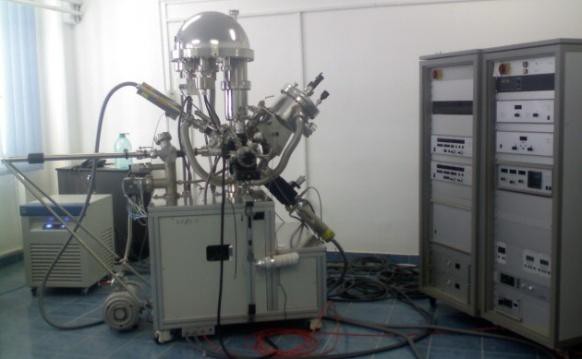
Allows investigation of elemental chemical composition and local structure on the surface of investigated materials; Analysis is performed under ultra high vacuum (~ 10-10 Torr); X-ray sources: monocromated dual anode Al / Ag Kα and dual anode Al / Mg, Kα;
Research unit: ICIBNS
Interdisciplinary Research Institute on Bio-Nano-Sciences of Babeş-Bolyai University was founded in 2001, under the name of Interdisciplinary Experimental Research Institute, as autonomous research and technological transfer unit. Its aim is to carry out interdisciplinary research in the most topical scientific and technological themes, belonging to Biosciences, Nanosciences and to the physical and chemical processes that took places at natural and nanostructured artificial systems interfaces. At the same time, our goal is to transfer the results obtained to potential local, national and international beneficiaries.
Location: ICI-BNS, room S4
Contact person: Prof.Dr. Simon Simion
FT-IR spectrometer coupled with a microscope
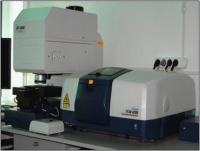 Research unit: ICIBNS
Research unit: ICIBNS
Interdisciplinary Research Institute on Bio-Nano-Sciences of Babeş-Bolyai University was founded in 2001, under the name of Interdisciplinary Experimental Research Institute, as autonomous research and technological transfer unit. Its aim is to carry out interdisciplinary research in the most topical scientific and technological themes, belonging to Biosciences, Nanosciences and to the physical and chemical processes that took places at natural and nanostructured artificial systems interfaces. At the same time, our goal is to transfer the results obtained to potential local, national and international beneficiaries.
Location: ICI-BNS, room 210
Contact person: Prof.Dr. Simon Simion
Inverted optical fluorescence microscope (Zeiss Axio Observer Z1, Zeiss, Germany)
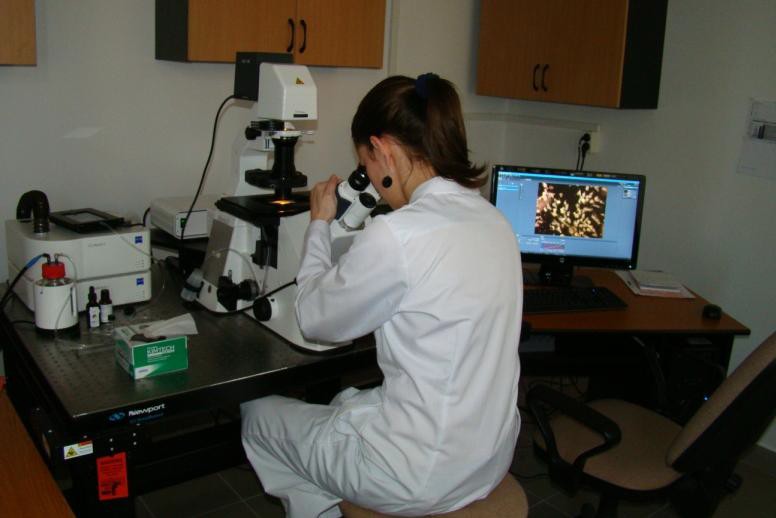
Fluorescence, differential interference contrast (DIC), bright field and dark field visualization; various objectives; light sources: halogen lamp (HAL 100) and metal halide lamp (HXP 120); condensors: Achromatic LD dry and Achromatic- Aplanatic immersion; fluorescence filter sets: set 49 (exc: G 365, em: BP 445/50); set 38 (exc: BP 470/40, em: BP 525/50); set 20 (exc: BP 546/12, em: BP 575-640); incubator for biological samples (humidity, temperature and CO2 control).
Research unit: ICIBNS
Interdisciplinary Research Institute on Bio-Nano-Sciences of Babeş-Bolyai University was founded in 2001, under the name of Interdisciplinary Experimental Research Institute, as autonomous research and technological transfer unit. Its aim is to carry out interdisciplinary research in the most topical scientific and technological themes, belonging to Biosciences, Nanosciences and to the physical and chemical processes that took places at natural and nanostructured artificial systems interfaces. At the same time, our goal is to transfer the results obtained to potential local, national and international beneficiaries.
Location: ICI-BNS/Nanobiophotonics and Laser Microspectroscopy Center, room S5A
Contact person: Prof. Dr. Aștilean Simion
Black Magic BM II Flexible 2
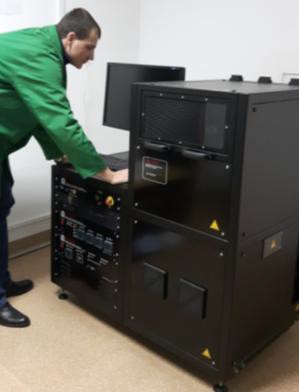
Fast response heater, up to 1000°C/minute ramp rates; operation modes: thermal CVD and plasma enhanced CVD; automatic process control; remote operation via TCP/IP (Transport Control Protocol/Internet Protocol); low temperature deposition.
Research unit: ICIBNS
Interdisciplinary Research Institute on Bio-Nano-Sciences of Babeş-Bolyai University was founded in 2001, under the name of Interdisciplinary Experimental Research Institute, as autonomous research and technological transfer unit. Its aim is to carry out interdisciplinary research in the most topical scientific and technological themes, belonging to Biosciences, Nanosciences and to the physical and chemical processes that took places at natural and nanostructured artificial systems interfaces. At the same time, our goal is to transfer the results obtained to potential local, national and international beneficiaries.
Location: ICI-BNS/Nanobiophotonics and Laser Microspectroscopy Center, room S5B
Contact person: Prof. Dr. Aștilean Simion
Particle size and Zeta potential measurement system (Nano ZS90, Malvern, UK) with autotitrator (MPT-2)
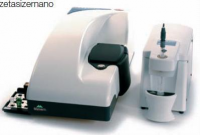 Size measurement maximum particle size range: 0.3 nm – 5 μm; Size measurement minimum sample volume: 20 μL; Zeta potential measurement particle size range: 3.8 nm – 100 µm; Zeta potential range: No practical limits exist; Sample concentration range: Up to 40%w/v; Minimum sample volume: 750µL (Folded capillary cell), 750µL (Dip cell), 150µL (High concentration cell); Absolute molecular weight range using Debye plot: 9,800Da – 2×107 Da; Molecular weight range: 342Da – 2×107 Da; Autotitrator MPT-2 from Malvern; Autotitrator titrant volume: 25 mL; Minimum dispense volume: 0.28μL, 1.68μL during standard titration; Minimum sample volume: 25 mL;
Size measurement maximum particle size range: 0.3 nm – 5 μm; Size measurement minimum sample volume: 20 μL; Zeta potential measurement particle size range: 3.8 nm – 100 µm; Zeta potential range: No practical limits exist; Sample concentration range: Up to 40%w/v; Minimum sample volume: 750µL (Folded capillary cell), 750µL (Dip cell), 150µL (High concentration cell); Absolute molecular weight range using Debye plot: 9,800Da – 2×107 Da; Molecular weight range: 342Da – 2×107 Da; Autotitrator MPT-2 from Malvern; Autotitrator titrant volume: 25 mL; Minimum dispense volume: 0.28μL, 1.68μL during standard titration; Minimum sample volume: 25 mL;
Research unit: ICIBNS
Interdisciplinary Research Institute on Bio-Nano-Sciences of Babeş-Bolyai University was founded in 2001, under the name of Interdisciplinary Experimental Research Institute, as autonomous research and technological transfer unit. Its aim is to carry out interdisciplinary research in the most topical scientific and technological themes, belonging to Biosciences, Nanosciences and to the physical and chemical processes that took places at natural and nanostructured artificial systems interfaces. At the same time, our goal is to transfer the results obtained to potential local, national and international beneficiaries.
Location: ICI-BNS/Nanobiophotonics and Laser Microspectroscopy Center, room 301
Contact person: Prof. Dr. Aștilean Simion
Microwave Synthesis Reactor (Monowave 300, Anton Paar, Austria)
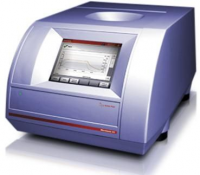 Monowave 300 provides an efficient state-of-theart approach towards microwave synthesis, turning previously unachievable reliability and performance into three-dimensional fact. Convenient operation limits up to 300 °C and 30 bar (435 psi) open up unforeseen opportunities for method development and optimization. Due to its high field density, the instrument provides rapid heating – even in 30 mL vials and for low absorbing solvents. A reliable, ruby-based fiber optic sensor ensures immediate feedback, approaching the peak of precision in temperature measurement.
Monowave 300 provides an efficient state-of-theart approach towards microwave synthesis, turning previously unachievable reliability and performance into three-dimensional fact. Convenient operation limits up to 300 °C and 30 bar (435 psi) open up unforeseen opportunities for method development and optimization. Due to its high field density, the instrument provides rapid heating – even in 30 mL vials and for low absorbing solvents. A reliable, ruby-based fiber optic sensor ensures immediate feedback, approaching the peak of precision in temperature measurement.
Research unit: ICIBNS
Interdisciplinary Research Institute on Bio-Nano-Sciences of Babeş-Bolyai University was founded in 2001, under the name of Interdisciplinary Experimental Research Institute, as autonomous research and technological transfer unit. Its aim is to carry out interdisciplinary research in the most topical scientific and technological themes, belonging to Biosciences, Nanosciences and to the physical and chemical processes that took places at natural and nanostructured artificial systems interfaces. At the same time, our goal is to transfer the results obtained to potential local, national and international beneficiaries.
Location: ICI-BNS/Nanobiophotonics and Laser Microspectroscopy Center, room 301
Contact person: Prof. Dr. Aștilean Simion
Time-resolved confocal fluorescence microscope system (MicroTime 200, PicoQuant, Germany)
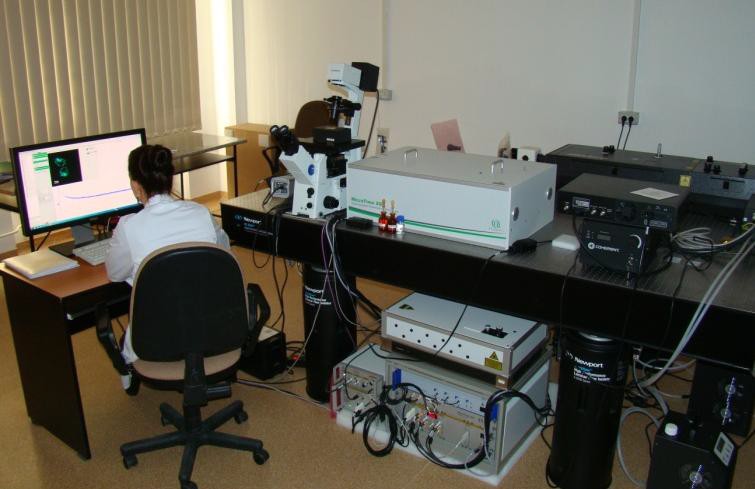
– optical inverted microscope (IX 71, Olympus); piezo x-y-scanning table and PiFoc z-piezo actuator for microscope objective; picosecond temporal resolution;
excitation: diode lasers (LDH-D series, at 375 nm, 405 nm, 485 nm, 510 nm and 640 nm) for picosecond pulses or cw operation
Research unit: ICIBNS
Interdisciplinary Research Institute on Bio-Nano-Sciences of Babeş-Bolyai University was founded in 2001, under the name of Interdisciplinary Experimental Research Institute, as autonomous research and technological transfer unit. Its aim is to carry out interdisciplinary research in the most topical scientific and technological themes, belonging to Biosciences, Nanosciences and to the physical and chemical processes that took places at natural and nanostructured artificial systems interfaces. At the same time, our goal is to transfer the results obtained to potential local, national and international beneficiaries.
Location: ICI-BNS Nanobiophotonics and Laser Microspectroscopy Center, room S5A
Contact person: Prof. Dr. Aștilean Simion
Confocal Raman microscope system (Alpha300R, Witec, Germany) coupled with Atomic Force Microscopy module (Alpha300A, Witec, Germany)

3 excitation sources (NdYag laser at 532 nm, He-Ne laser at 632.8 nm and laser diode at 785 nm); piezo-electric scanner (100×100 μm); confocal detection with lateral resolution of 200-300 nm; 6 plan achromat objectives; thermoelectrically cooled CCD camera (Peltier cooler, -70°C) for NIR region; UHTS300 spectrometer; detection interval 150 – 3500 cm-1; WITec Project Plus software for multivariate K-means analysis; AFM operation modes: contact mode/lateral force, pulsed force, phase imaging, magnetic force, nanolithography, nanomanipulation; special objective for AFM measurements in liquid media.
Research unit: ICIBNS
Interdisciplinary Research Institute on Bio-Nano-Sciences of Babeş-Bolyai University was founded in 2001, under the name of Interdisciplinary Experimental Research Institute, as autonomous research and technological transfer unit. Its aim is to carry out interdisciplinary research in the most topical scientific and technological themes, belonging to Biosciences, Nanosciences and to the physical and chemical processes that took places at natural and nanostructured artificial systems interfaces. At the same time, our goal is to transfer the results obtained to potential local, national and international beneficiaries.
Location: ICI-BNS/Nanobiophotonics and Laser Microspectroscopy Center, room S8
Contact person: Prof. Dr. Aștilean Simion
Equipment for deposition of thin metallic films (PREVAC, Poland)
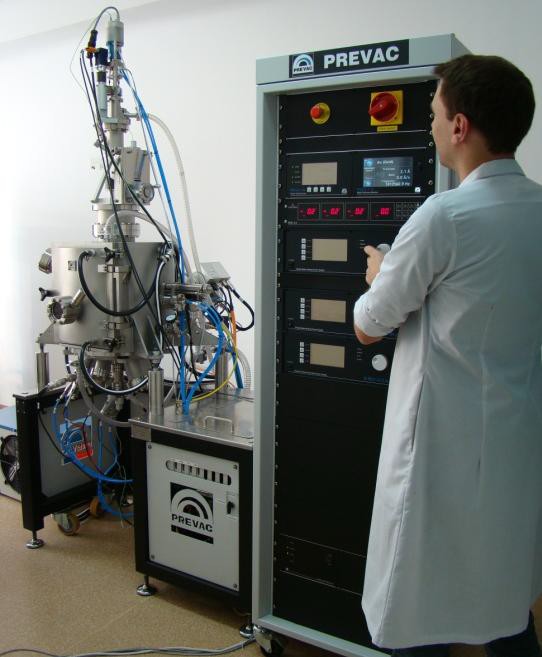
-Electron beam evaporator EBV 40A1: temperature range 160°C-2300°C; effusion cell EF 40C1: temperature range 250°C-1500°C; 2 axes manipulator: maximum shift 50 mm on Z axis and rotation in XY (maximum speed 60 rpm).
Research unit: ICIBNS
Interdisciplinary Research Institute on Bio-Nano-Sciences of Babeş-Bolyai University was founded in 2001, under the name of Interdisciplinary Experimental Research Institute, as autonomous research and technological transfer unit. Its aim is to carry out interdisciplinary research in the most topical scientific and technological themes, belonging to Biosciences, Nanosciences and to the physical and chemical processes that took places at natural and nanostructured artificial systems interfaces. At the same time, our goal is to transfer the results obtained to potential local, national and international beneficiaries.
Location: ICI-BNS/Nanobiophotonics and Laser Microspectroscopy Center, room S5B
Contact person: Prof. Dr. Aștilean Simion
AVANTA PM GBC Computer assisted Atomic Absorption Spectrophotometer with Graphite Furnace
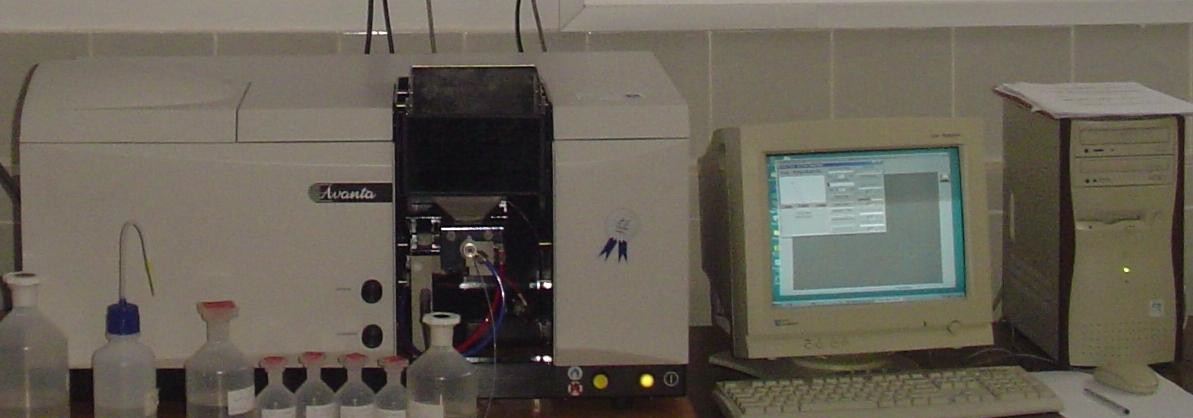 175-900 nm, 0-3 Abs. Slit 0.2 – 2 nm – Quantitative determination of Cu, Ni, Cr, Fe, Co, Cd, Zn, Hg, Pb, Mn, As, Se, Sb, Sn, Ca, Mg, K, Na, Ag, Al, Au, Ti, V from solutions.
175-900 nm, 0-3 Abs. Slit 0.2 – 2 nm – Quantitative determination of Cu, Ni, Cr, Fe, Co, Cd, Zn, Hg, Pb, Mn, As, Se, Sb, Sn, Ca, Mg, K, Na, Ag, Al, Au, Ti, V from solutions.
Research unit: ICIBNS
Interdisciplinary Research Institute on Bio-Nano-Sciences of Babeş-Bolyai University was founded in 2001, under the name of Interdisciplinary Experimental Research Institute, as autonomous research and technological transfer unit. Its aim is to carry out interdisciplinary research in the most topical scientific and technological themes, belonging to Biosciences, Nanosciences and to the physical and chemical processes that took places at natural and nanostructured artificial systems interfaces. At the same time, our goal is to transfer the results obtained to potential local, national and international beneficiaries.
Location: ICI-BNS/Physical and Chemical Analyses Center, room S1
Contact person: Prof. Dr. Ilea Petru
Inductive Coupled Plasma - Time of Flight - Mass Spectrometer ICP-TOF-MS Optimass 9500 GBC
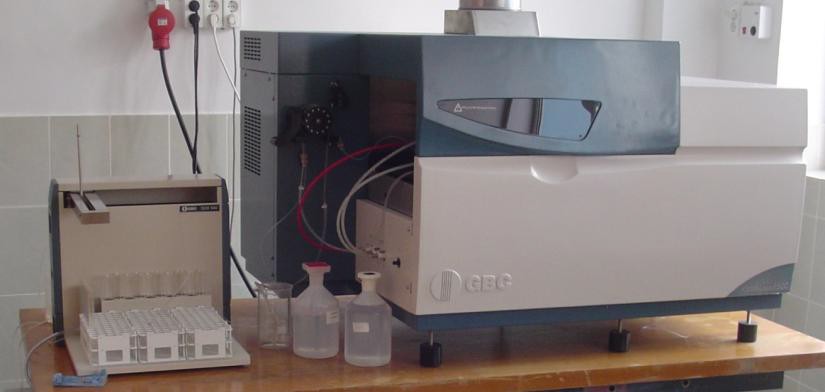 Solutions elemental composition determination
Solutions elemental composition determination
Research unit: ICIBNS
Interdisciplinary Research Institute on Bio-Nano-Sciences of Babeş-Bolyai University was founded in 2001, under the name of Interdisciplinary Experimental Research Institute, as autonomous research and technological transfer unit. Its aim is to carry out interdisciplinary research in the most topical scientific and technological themes, belonging to Biosciences, Nanosciences and to the physical and chemical processes that took places at natural and nanostructured artificial systems interfaces. At the same time, our goal is to transfer the results obtained to potential local, national and international beneficiaries.
Location: ICI-BNS/Physical and Chemical Analyses Center, room S1
Contact person: Prof. Dr. Ilea Petru
Alexandru Borza Botanical Garden
Herbarium (CL) of Babeș-Bolyai Univesity
 Specialty: Worldwide, with emphasis on the Romanian flora; all plant groups, but mainly cormophytes.
Specialty: Worldwide, with emphasis on the Romanian flora; all plant groups, but mainly cormophytes.
Date Founded: 1873
Number of Specimens: 660500
Research unit: Alexandru Borza Botanical Garden
Established in 1920 and officially opened for the public in 1925, Alexandru Borza Botanical Garden is a scientific, didactic and educational institution whose foundations were set in the present location by Alexandru Borza, prominent figure in the field of Biology in Romania.
Location: Alexandru Borza Botanical Garden
Contact person: Conf. Dr. Puscaș Mihai
”Ioan Ursu” Institute of Physics
Magnetic measuring systems: VSM 12 T - Cryogenics, MagLab 2000 9T - Oxford, Weiss Magnetic Balance
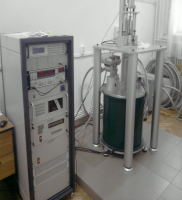 VSM 12 T – Magnetic fields 0-12 T, temp. range 1.4-700 K. DC and AC magnetic measurements
VSM 12 T – Magnetic fields 0-12 T, temp. range 1.4-700 K. DC and AC magnetic measurements
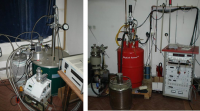 MagLab 2000 – Temperatures range 1.5- 300 K and external fields up to 9 T, ac and dc magnetic measurements in the frequency range 10 Hz-10 kHz, 2 K
MagLab 2000 – Temperatures range 1.5- 300 K and external fields up to 9 T, ac and dc magnetic measurements in the frequency range 10 Hz-10 kHz, 2 K
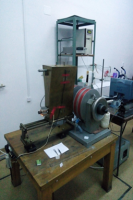 Wiess Magnetic Balance – Used to perform magnetic susceptibility mesurements in a temperature range of 77 – 1000 K
Wiess Magnetic Balance – Used to perform magnetic susceptibility mesurements in a temperature range of 77 – 1000 K
Research unit: ”Ioan Ursu” Institute of Physics
The Institute of Physics “Ioan Ursu” includes the research centres and the laboratories from the Faculty of Physics of the University Babes-Bolyai, professors, researchers, PhD students and Master students. Its name was conferred in 2007 as a gesture of gratitude and appreciation of the entire scientific activity with results of wide national and international recognition of the Academician Professor Ioan Ursu, its beginnings being much related to the Faculty of Physics from Cluj-Napoca.
Location: ”Ioan Ursu” Institute of Physics, Magnetic Measurements Laboratory
Contact person: Prof. Dr. Romulus Tetean
System for thin films deposition by magnetron sputtering
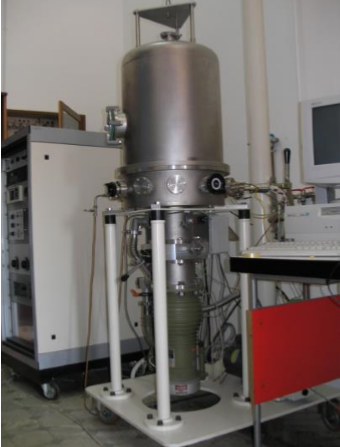 The complex installation (Kurt Lesker, Varian, Advanced Energy and Maxtech INC), for synthesis of thin films working in DC and AC magnetron sputtering regimes , by using 3 sources ( magnetrons) He realizes the controle of:substrate temperature, sputtering power, pressure of the sputtering gas, deposition rate and the thickness of the film.
The complex installation (Kurt Lesker, Varian, Advanced Energy and Maxtech INC), for synthesis of thin films working in DC and AC magnetron sputtering regimes , by using 3 sources ( magnetrons) He realizes the controle of:substrate temperature, sputtering power, pressure of the sputtering gas, deposition rate and the thickness of the film.
Usage and applications: – Thin films deposition on different substrates (ceramics, single crystals,metals) by using DC and RF magnetron sputtering system; Offers for foreign users : Thin films layers deposition.
Research unit: ”Ioan Ursu” Institute of Physics
The Institute of Physics “Ioan Ursu” includes the research centres and the laboratories from the Faculty of Physics of the University Babes-Bolyai, professors, researchers, PhD students and Master students. Its name was conferred in 2007 as a gesture of gratitude and appreciation of the entire scientific activity with results of wide national and international recognition of the Academician Professor Ioan Ursu, its beginnings being much related to the Faculty of Physics from Cluj-Napoca.
Location: ”Ioan Ursu” Institute of Physics, Thin Film Laboratory
Contact person: Prof. Dr. Aurel Pop
Laboratory for transport measurements in high magnetic fields
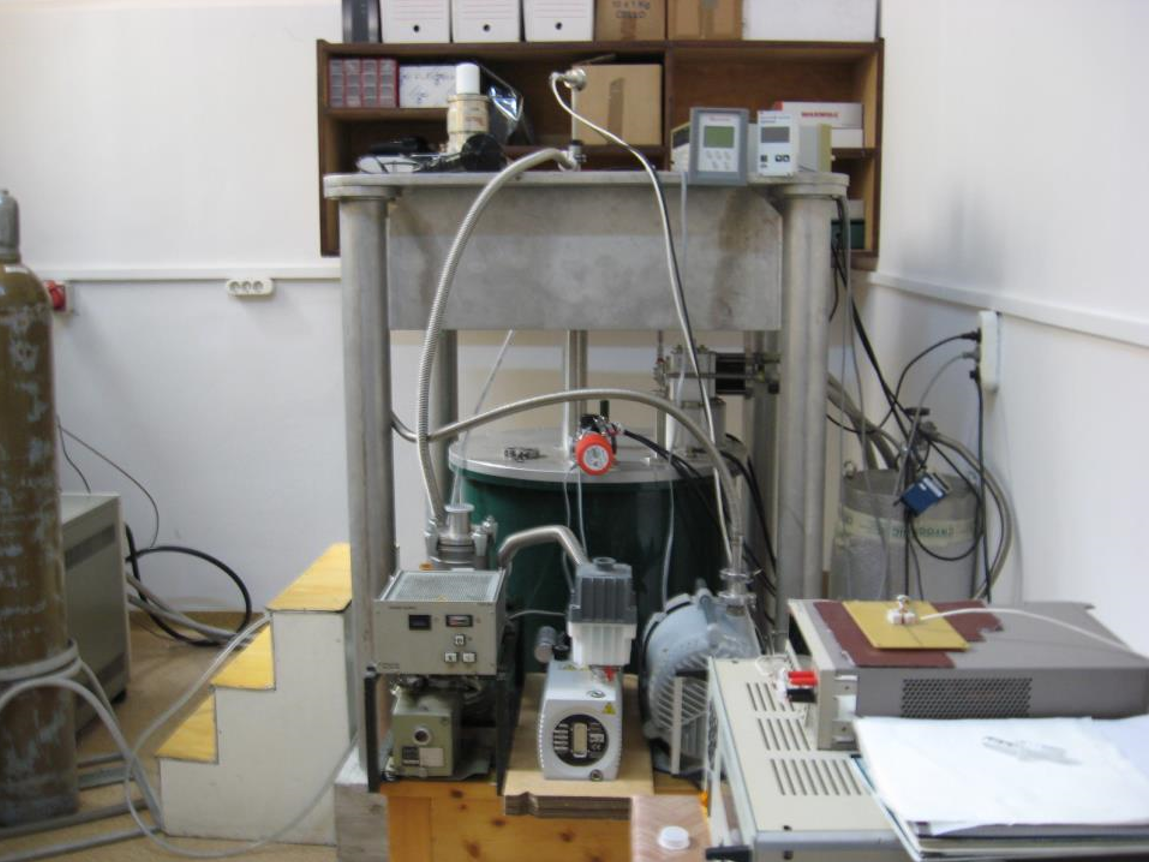
This laboratory is destinated for the study of magnetotransport properties of the samples in high magnetic fields, up to 7 T and in the temperature range 5 – 300 K. The experimental setup consists of: Cryogenic Ltd. (UK) cryostat equiped with: superconducting magnet, current source, Sumitomo (SHI)closed cycle refrigerator, Lake Shore 340 temperature controller, variable temperature insert, electrical measurement probe with temperature sensor. The system is computer-controlled by a LabVIEW program to work at selected temperature levels and various magnetic fields.
The electrical measurements can be done by the four-probe method, by using a Keithley 2400 source operated by a Matlab program by means of a GPIB interface. Voltage range: ±20 mV – ±200 V; Current range: ±1µA – ±1 A; Resistance measurement range: 0,001 Ω – 500 MΩ
Research unit: ”Ioan Ursu” Institute of Physics
The Institute of Physics “Ioan Ursu” includes the research centres and the laboratories from the Faculty of Physics of the University Babes-Bolyai, professors, researchers, PhD students and Master students. Its name was conferred in 2007 as a gesture of gratitude and appreciation of the entire scientific activity with results of wide national and international recognition of the Academician Professor Ioan Ursu, its beginnings being much related to the Faculty of Physics from Cluj-Napoca.
Location: ”Ioan Ursu” Institute of Physics, Laboratory for transport measurements in high magnetic fields
Contact person: Conf.Dr. Iosif Gr. Deac
Bruker D8-X Advance X-ray
 Research unit: ”Ioan Ursu” Institute of Physics
Research unit: ”Ioan Ursu” Institute of Physics
The Institute of Physics “Ioan Ursu” includes the research centres and the laboratories from the Faculty of Physics of the University Babes-Bolyai, professors, researchers, PhD students and Master students. Its name was conferred in 2007 as a gesture of gratitude and appreciation of the entire scientific activity with results of wide national and international recognition of the Academician Professor Ioan Ursu, its beginnings being much related to the Faculty of Physics from Cluj-Napoca.
Location: ”Ioan Ursu” Institute of Physics, Magnetic Measurements Laboratory
Contact person: Conf. dr. Andreica Daniel
Simultanious Thermal Analysis: TA- Instruments Q600 Simultaneous DSC-TGA
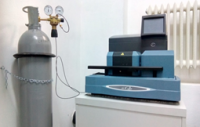 Thermal analysis: DTA, DSC, DTG. Temperature range RT to 1500 degrees Celsius, in controled atmosphere (O2, N2, Ar) and optional reactive gas
Thermal analysis: DTA, DSC, DTG. Temperature range RT to 1500 degrees Celsius, in controled atmosphere (O2, N2, Ar) and optional reactive gas
The Institute of Physics “Ioan Ursu” includes the research centres and the laboratories from the Faculty of Physics of the University Babes-Bolyai, professors, researchers, PhD students and Master students. Its name was conferred in 2007 as a gesture of gratitude and appreciation of the entire scientific activity with results of wide national and international recognition of the Academician Professor Ioan Ursu, its beginnings being much related to the Faculty of Physics from Cluj-Napoca.
Location: ”Ioan Ursu” Institute of Physics, Magnetic Measurements Laboratory
Contact person: Prof.dr. Pop Viorel
Laboratory for the synthesis of magnetic thin films
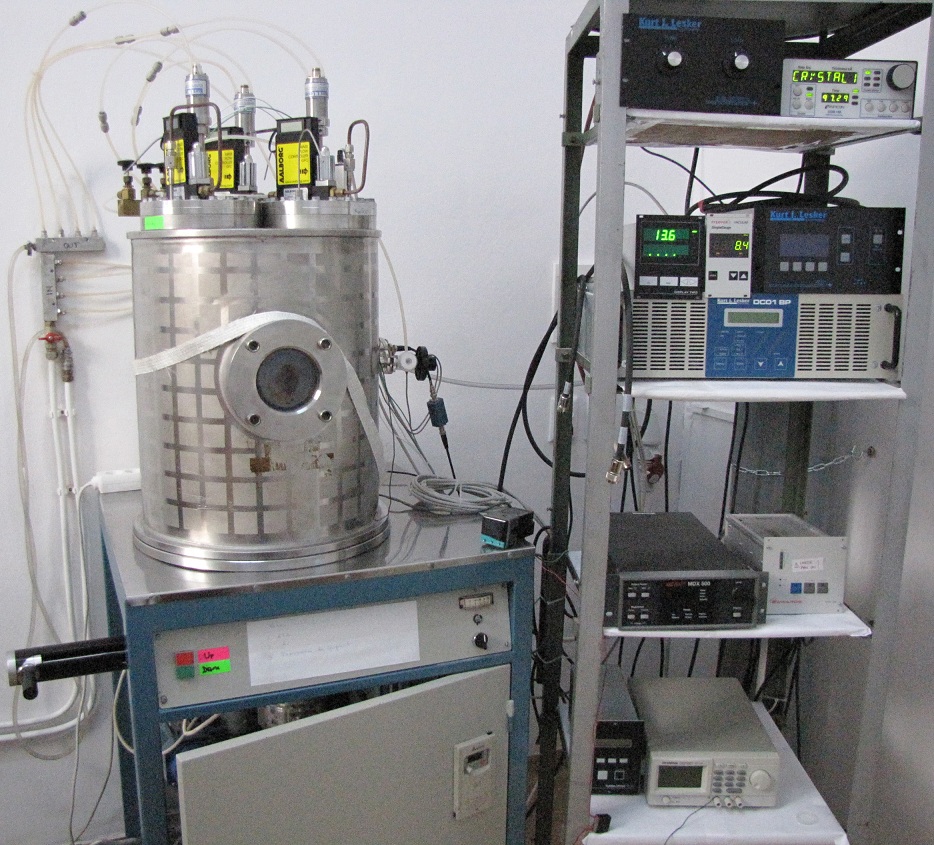
The laboratory for the synthesis of magnetic thin films is comprised of a deposition system with which we can obtain thin films through DC and RF magnetron sputtering. The system is equipped with 3 confocal magnetrons, and is capable of co-sputtering from different targets. For DC magnetron sputtering, the laboratory is equipped with two DC power supplies with a maximum power of 500 W. For RF sputtering we use an RF power supply with a maximum power of 300 W. We can obtain polycristalline fims as well as epitaxial ones. The films can be deposited at different Ar pressures and temperatures up to 550 ºC. The layer thickness and deposition rate can be measured in real time using a thickness monitor.
In this laboratory we study multilayer magnetic thin films composed of hard and soft magnetic materials, with applications in spintronics, electronics, and permanent magnets. The research is focused on the fundamental properties of thin films as well as applications in the industry.
Research unit: ”Ioan Ursu” Institute of Physics
The Institute of Physics “Ioan Ursu” includes the research centres and the laboratories from the Faculty of Physics of the University Babes-Bolyai, professors, researchers, PhD students and Master students. Its name was conferred in 2007 as a gesture of gratitude and appreciation of the entire scientific activity with results of wide national and international recognition of the Academician Professor Ioan Ursu, its beginnings being much related to the Faculty of Physics from Cluj-Napoca.
Location: ”Ioan Ursu” Institute of Physics, room S49-50
Contact person: Lect.dr. ing. Mican Sever
Planetary Ball Mill – Fritsch
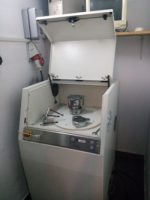 Used for the syntesis by mechanical milling/alloying of nano-powders and alloys.
Used for the syntesis by mechanical milling/alloying of nano-powders and alloys.
Research unit: ”Ioan Ursu” Institute of Physics
The Institute of Physics “Ioan Ursu” includes the research centres and the laboratories from the Faculty of Physics of the University Babes-Bolyai, professors, researchers, PhD students and Master students. Its name was conferred in 2007 as a gesture of gratitude and appreciation of the entire scientific activity with results of wide national and international recognition of the Academician Professor Ioan Ursu, its beginnings being much related to the Faculty of Physics from Cluj-Napoca.
Location: ”Ioan Ursu” Institute of Physics, Sample preparation laboratory
Contact person: Lect.dr. Dudric Roxana
Multilaser confocal Renishaw InVia Reflex Raman spectrometer coupled with the NT-MDT Ntegra Spectra SPM microscope
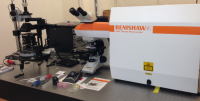 The Raman-SPM instrument combines high resolution AFM imaging capabilities with the structural characterization of the sample down to single molecule level with Raman spectroscopy. Both AFM and Raman spectroscopy methods are non-invasive label-free approaches. The Raman-SPM equipment is capable of measuring spectroscopic properties of a sample simultaneously with the topographic image in the absence of labeling or contrasting.
The Raman-SPM instrument combines high resolution AFM imaging capabilities with the structural characterization of the sample down to single molecule level with Raman spectroscopy. Both AFM and Raman spectroscopy methods are non-invasive label-free approaches. The Raman-SPM equipment is capable of measuring spectroscopic properties of a sample simultaneously with the topographic image in the absence of labeling or contrasting.
Research unit: ”Ioan Ursu” Institute of Physics
The Institute of Physics “Ioan Ursu” includes the research centres and the laboratories from the Faculty of Physics of the University Babes-Bolyai, professors, researchers, PhD students and Master students. Its name was conferred in 2007 as a gesture of gratitude and appreciation of the entire scientific activity with results of wide national and international recognition of the Academician Professor Ioan Ursu, its beginnings being much related to the Faculty of Physics from Cluj-Napoca.
Location: ”Ioan Ursu” Institute of Physics, Centrul de Fizică Biomoleculară
Contact person: Prof.dr. Chiş Vasile
Bruker Biospec PharmaScan 7T MRI
 AutoPac™ – Motorized, software controlled animal positioning system for routine animal handling and increased animal throughput; IntraGate -Self gated steady-state cardiac imaging package requiring no external sensor hardware and trigger devices; Phased-array RF coil technology for increased sensitivity and reduced scan times; MRI CryoProbe™ – Sensitivity increase up to a factor of 2.5 enables MRI of microscopic pathologies; ParaVision®6 – Fully intuitive software package for multi-dimensional MRI/ MRS data acquisition, reconstruction, analysis and visualization
AutoPac™ – Motorized, software controlled animal positioning system for routine animal handling and increased animal throughput; IntraGate -Self gated steady-state cardiac imaging package requiring no external sensor hardware and trigger devices; Phased-array RF coil technology for increased sensitivity and reduced scan times; MRI CryoProbe™ – Sensitivity increase up to a factor of 2.5 enables MRI of microscopic pathologies; ParaVision®6 – Fully intuitive software package for multi-dimensional MRI/ MRS data acquisition, reconstruction, analysis and visualization
Research unit: ”Ioan Ursu” Institute of Physics
The Institute of Physics “Ioan Ursu” includes the research centres and the laboratories from the Faculty of Physics of the University Babes-Bolyai, professors, researchers, PhD students and Master students. Its name was conferred in 2007 as a gesture of gratitude and appreciation of the entire scientific activity with results of wide national and international recognition of the Academician Professor Ioan Ursu, its beginnings being much related to the Faculty of Physics from Cluj-Napoca.
Location: ”Ioan Ursu” Institute of Physics, Centrul Naţional de Rezonanţă Magnetică
Contact person: Lect.dr. Turcu Flaviu
Bruker Avance 400 MHz NMR spectrometer (9,4 T)
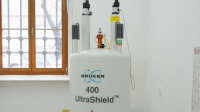 Research unit: ”Ioan Ursu” Institute of Physics
Research unit: ”Ioan Ursu” Institute of Physics
The Institute of Physics “Ioan Ursu” includes the research centres and the laboratories from the Faculty of Physics of the University Babes-Bolyai, professors, researchers, PhD students and Master students. Its name was conferred in 2007 as a gesture of gratitude and appreciation of the entire scientific activity with results of wide national and international recognition of the Academician Professor Ioan Ursu, its beginnings being much related to the Faculty of Physics from Cluj-Napoca.
Location: ”Ioan Ursu” Institute of Physics, Centrul Naţional de Rezonanţă Magnetică
Contact person: Lect.dr. Turcu Flaviu
Bruker Avance III 600 MHz NMR spectrometer (14,1 T)
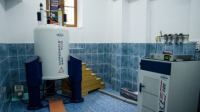 Bruker Avance III 600 MHz NMR spectrometer (14,1 T) is an unique Romanian capability
Bruker Avance III 600 MHz NMR spectrometer (14,1 T) is an unique Romanian capability
The Institute of Physics “Ioan Ursu” includes the research centres and the laboratories from the Faculty of Physics of the University Babes-Bolyai, professors, researchers, PhD students and Master students. Its name was conferred in 2007 as a gesture of gratitude and appreciation of the entire scientific activity with results of wide national and international recognition of the Academician Professor Ioan Ursu, its beginnings being much related to the Faculty of Physics from Cluj-Napoca.
Location: ”Ioan Ursu” Institute of Physics, Centrul Naţional de Rezonanţă Magnetică
Contact person: Lect.dr. Turcu Flaviu
The Research Center for Integrated Geological Studies
High Resolution Laser Ablation Inductively Coupled Plasma Mass Spectrometer (LA-HR-ICP-MS)
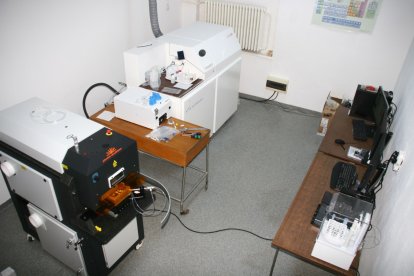 Trace elements analysis in solutions at ppq level, except elements in gaseous forms; Determination of chemical composition of solid substances using laser ablation; U-Th-Pb based geochronology on zircon and accessory minerals with higher actinide content
Trace elements analysis in solutions at ppq level, except elements in gaseous forms; Determination of chemical composition of solid substances using laser ablation; U-Th-Pb based geochronology on zircon and accessory minerals with higher actinide content
Research unit: The Research Center for Integrated Geological Studies
Location: Faculty of Biology and Geology, Laborator de Geochimie si geocronologie izotopica
Contact person: Șef.Lucr. Dr. Constantin Balica
CAMECA SXFive Electron Probe Micro-Analyzer (EPMA)
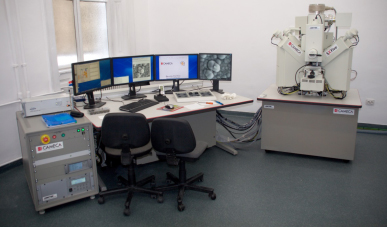 Morphological analysis of solid substances (minerals and synthetic materials); Elemental composition and element mapping in solid substances (atomic number higher than7)
Morphological analysis of solid substances (minerals and synthetic materials); Elemental composition and element mapping in solid substances (atomic number higher than7)
SEM, BSE, and CL imaging; Chemical dating geochronology on monazite or other U-Th-Pb containing minerals; Sample preparation with carbon coating (Cressington 108 Carbon/A)
Research unit: The Research Center for Integrated Geological Studies
Location: Faculty of Biology and Geology, Laborator de Geochimie si geocronologie izotopica
Contact person: Șef.Lucr. Dr. Constantin Balica





